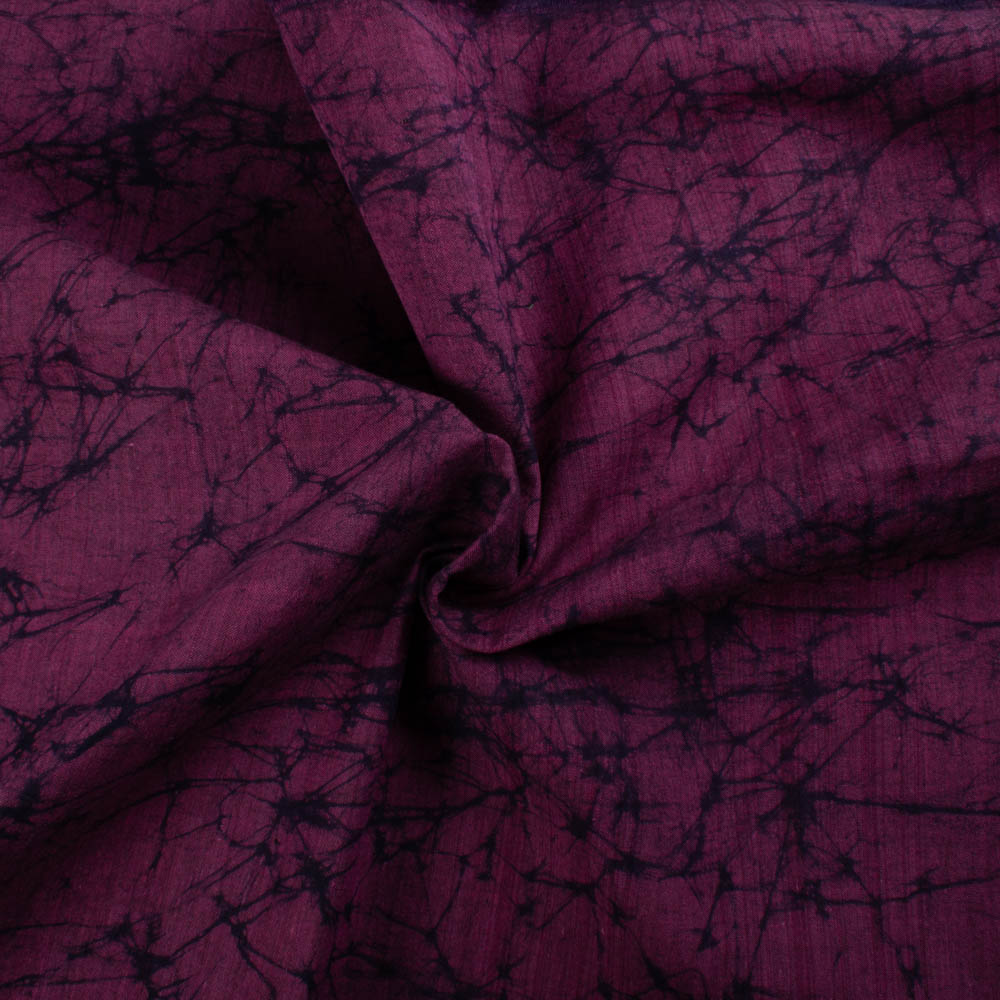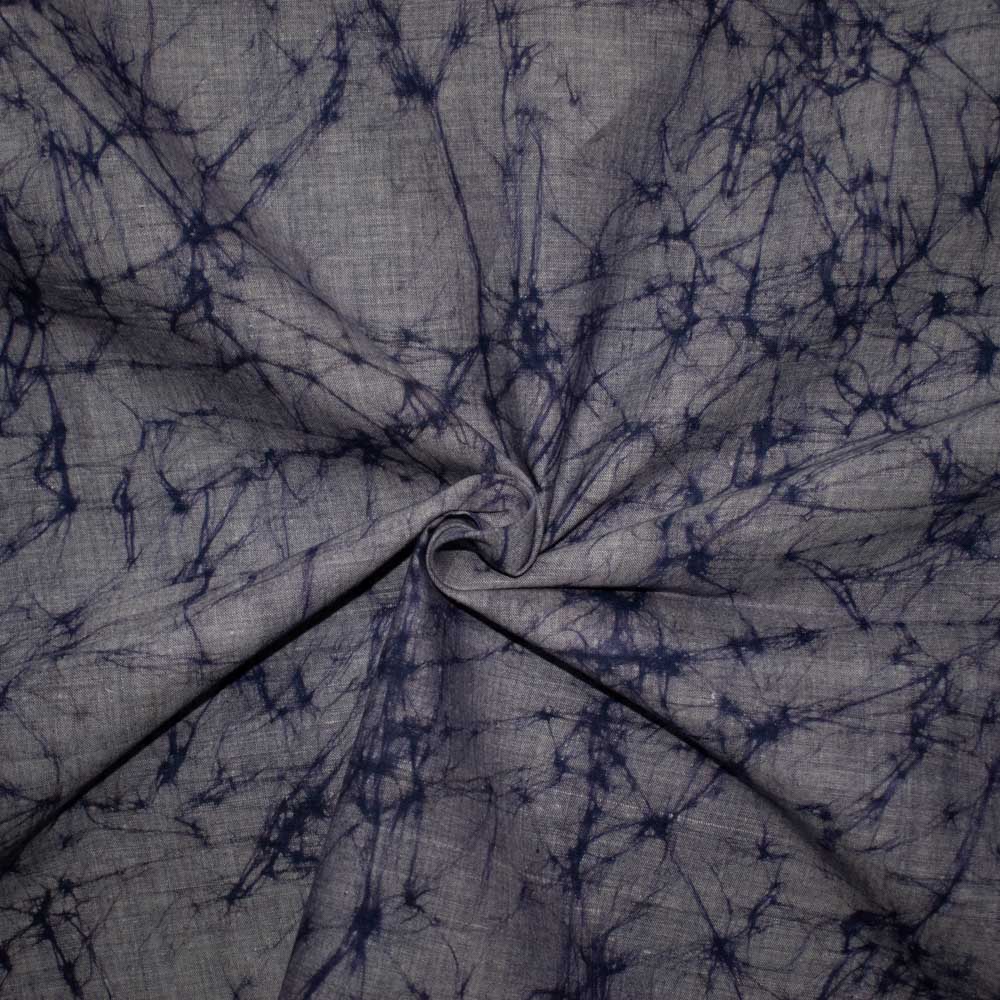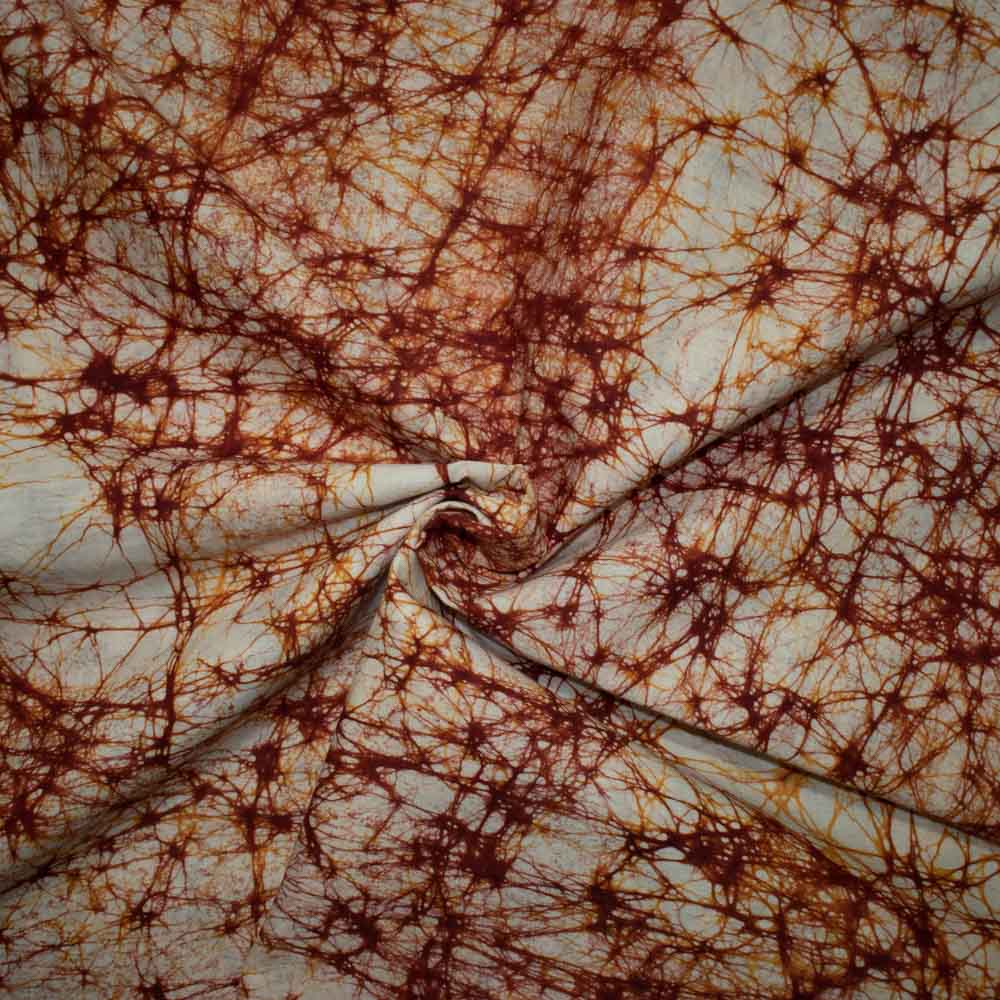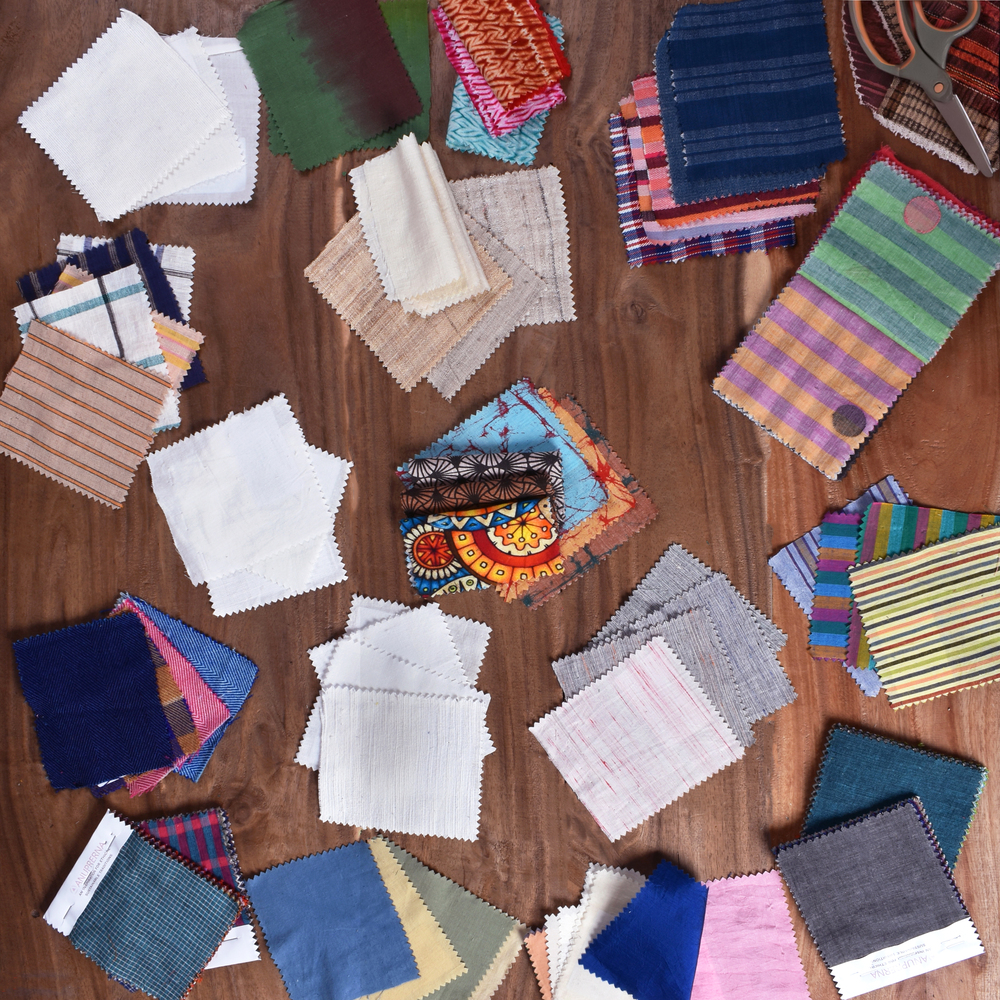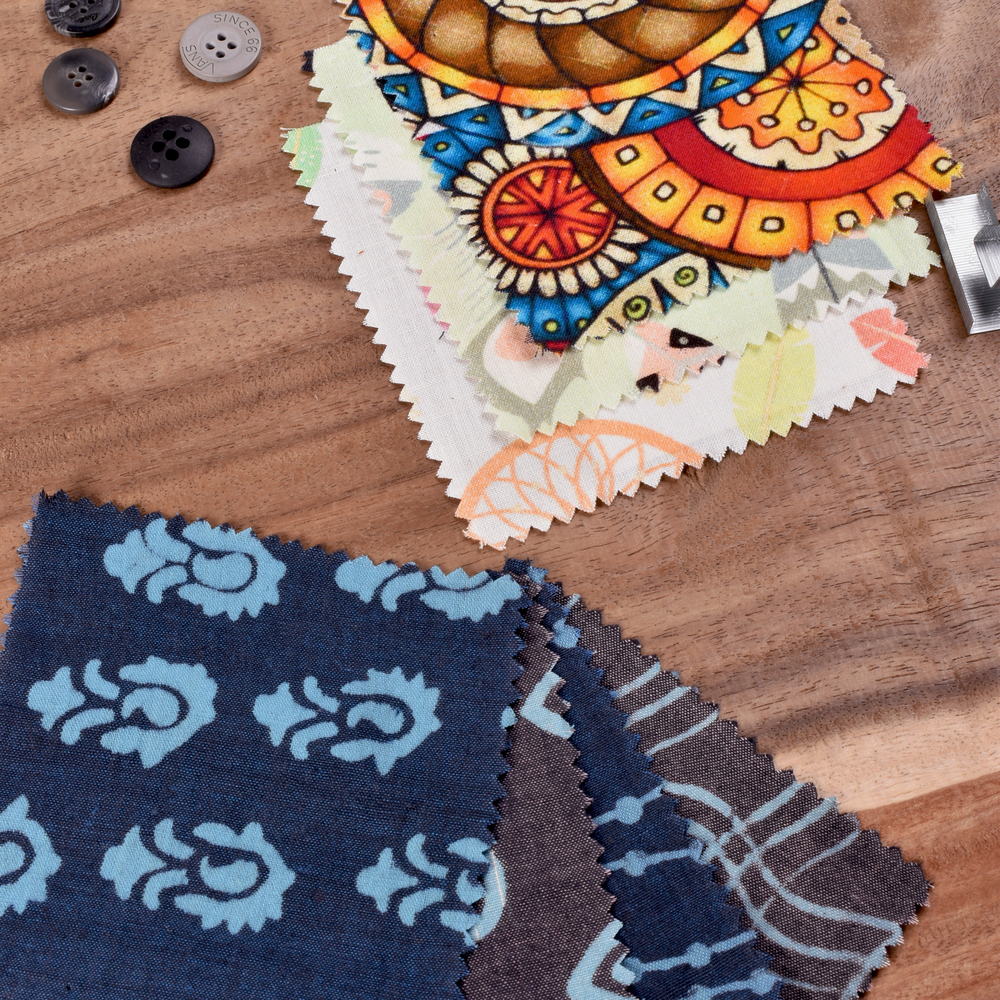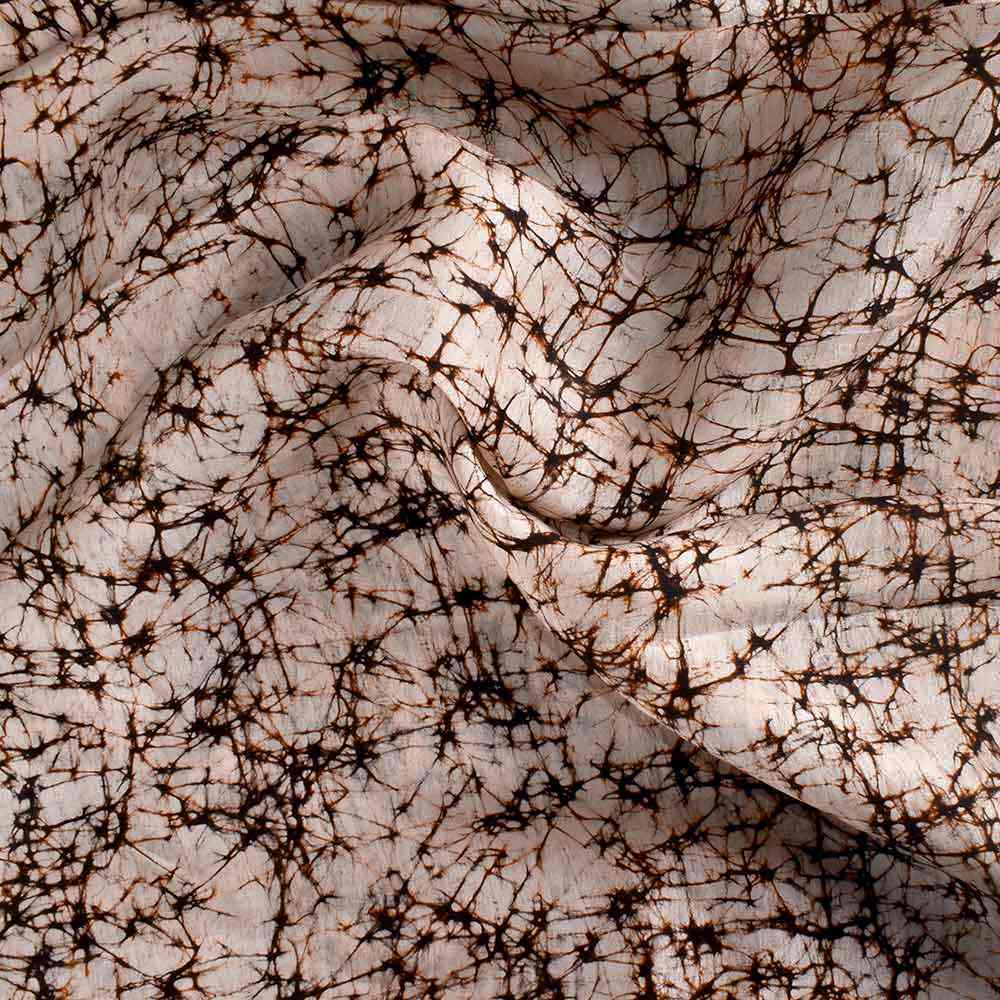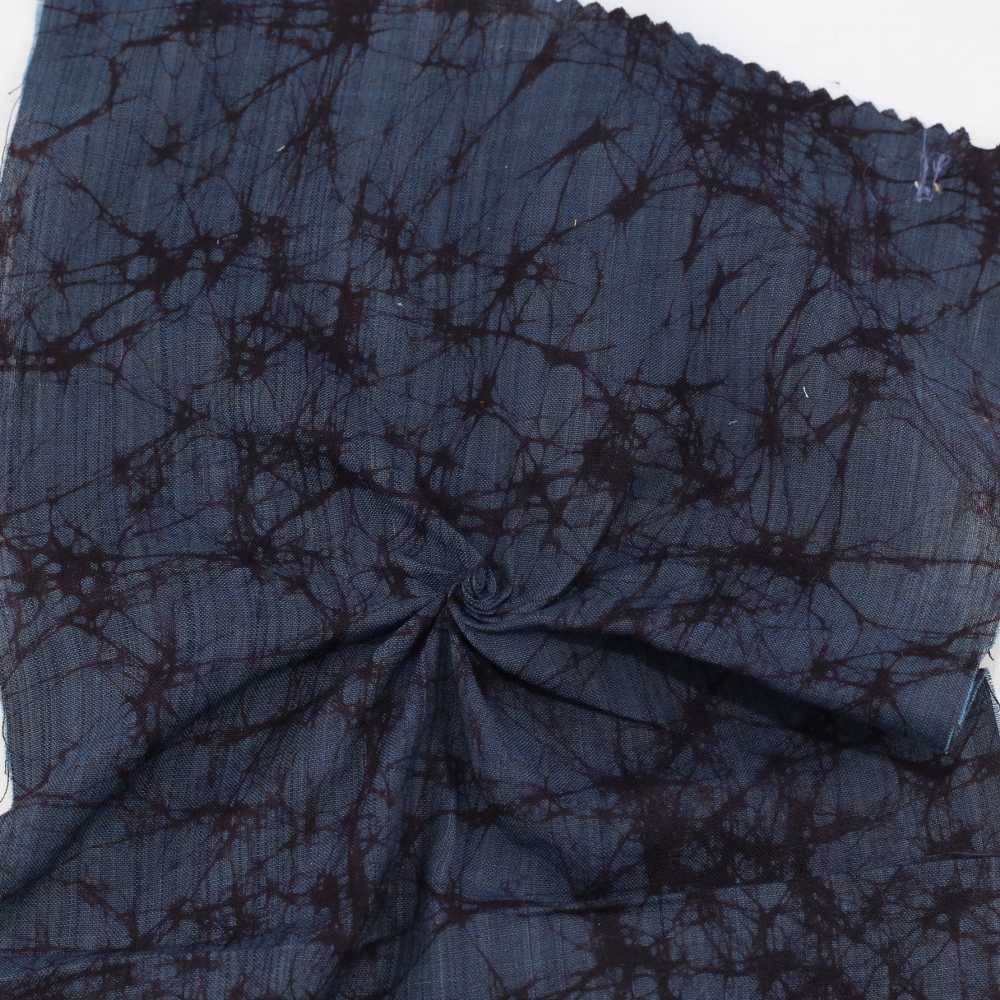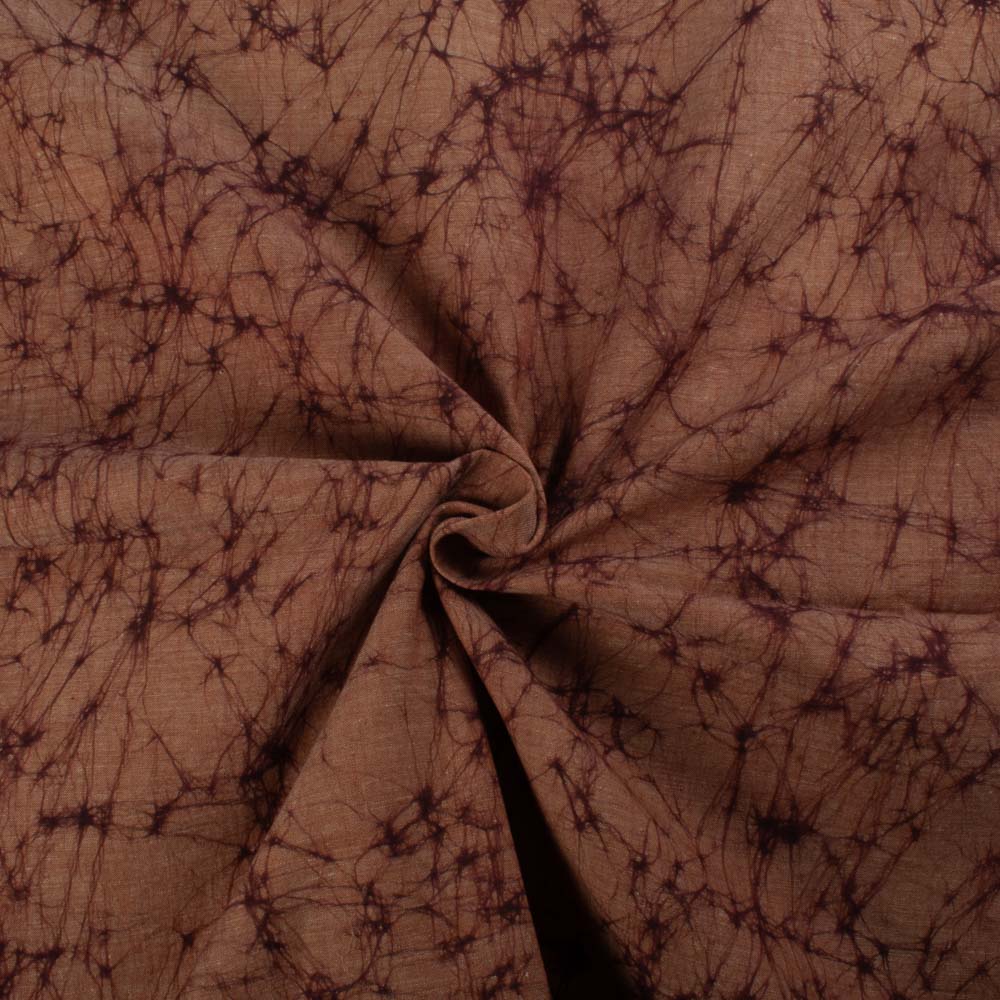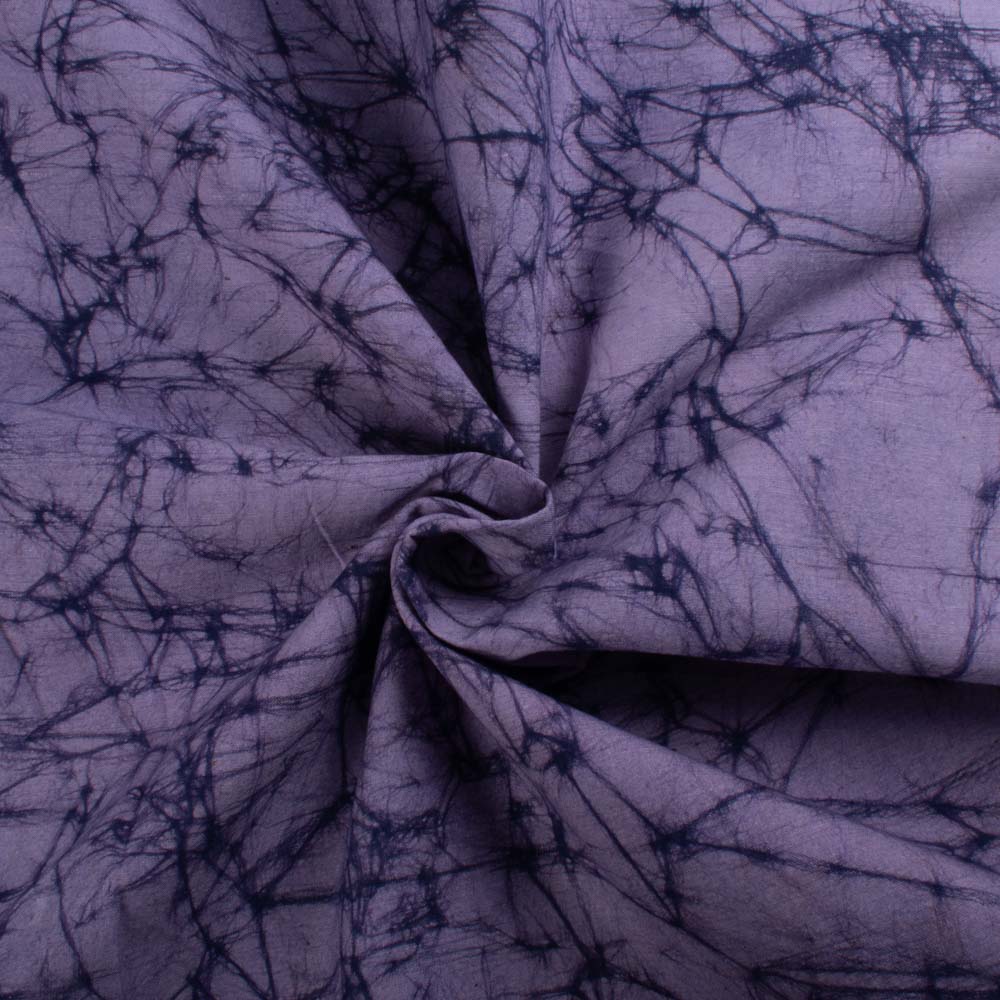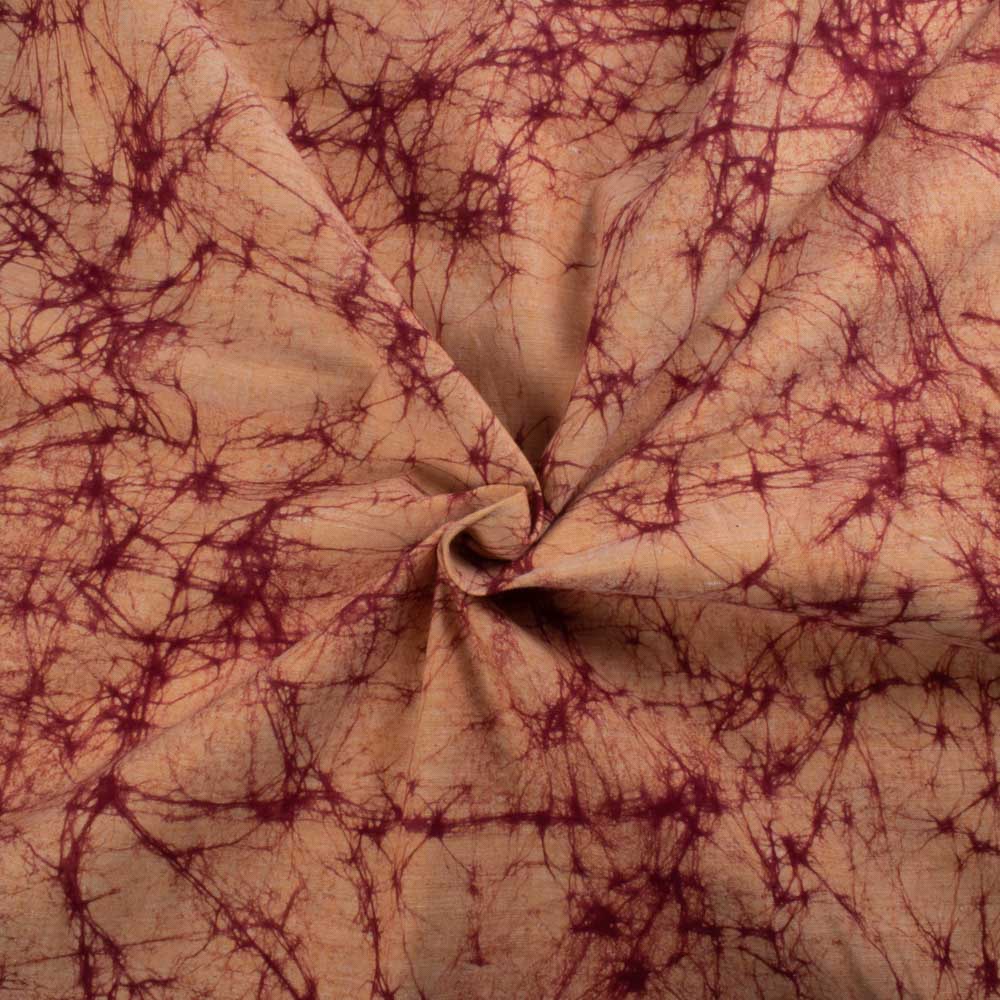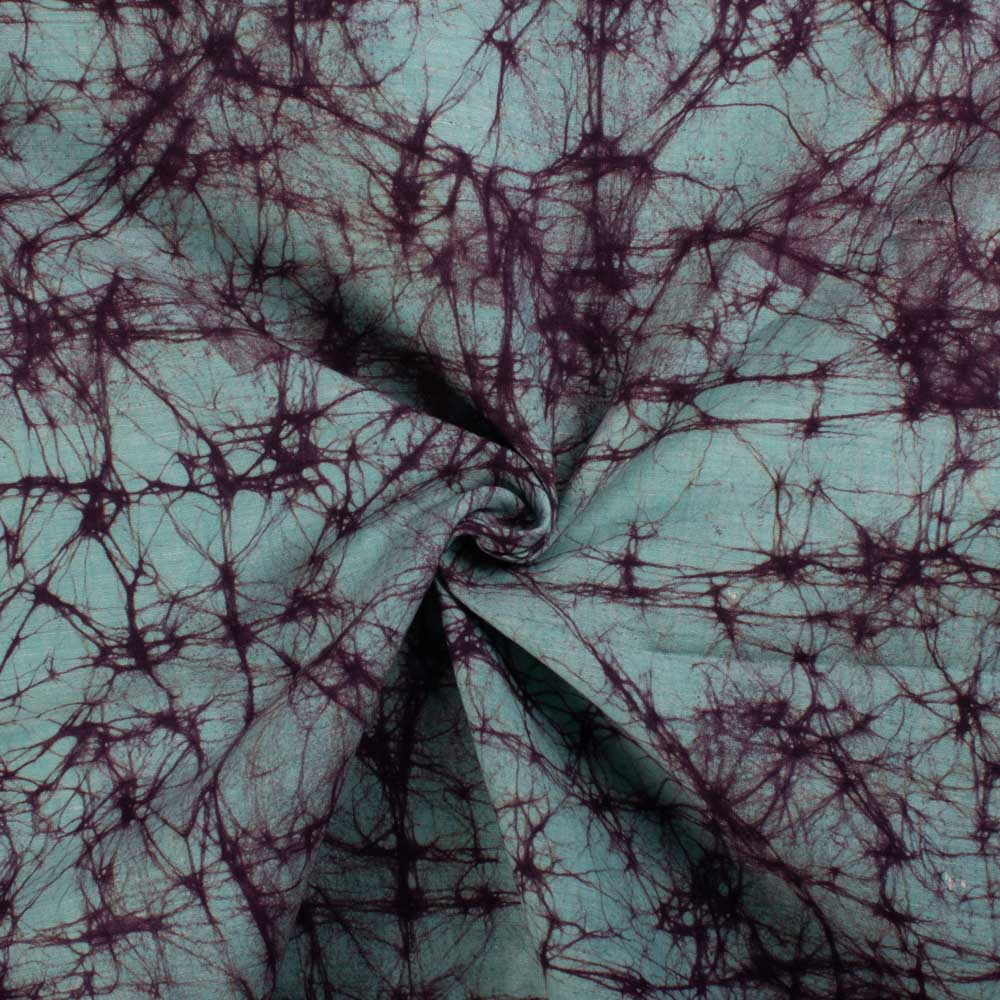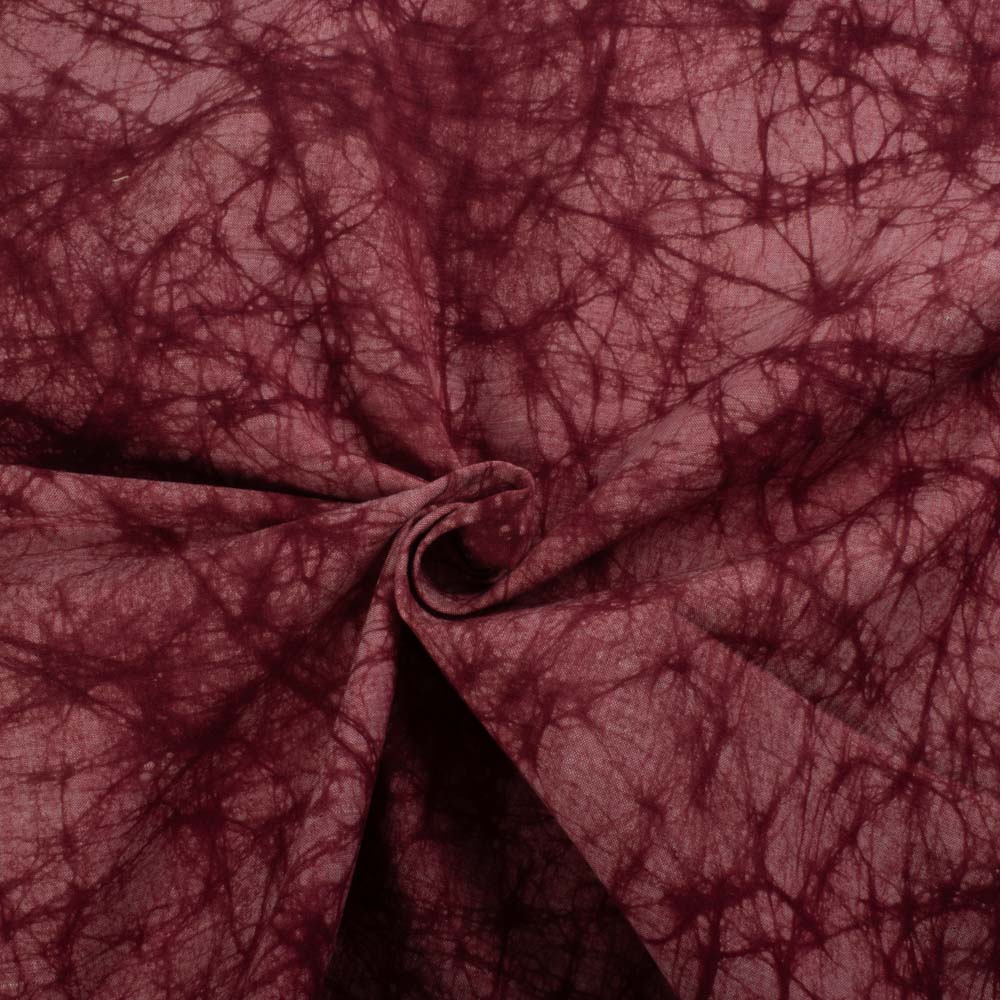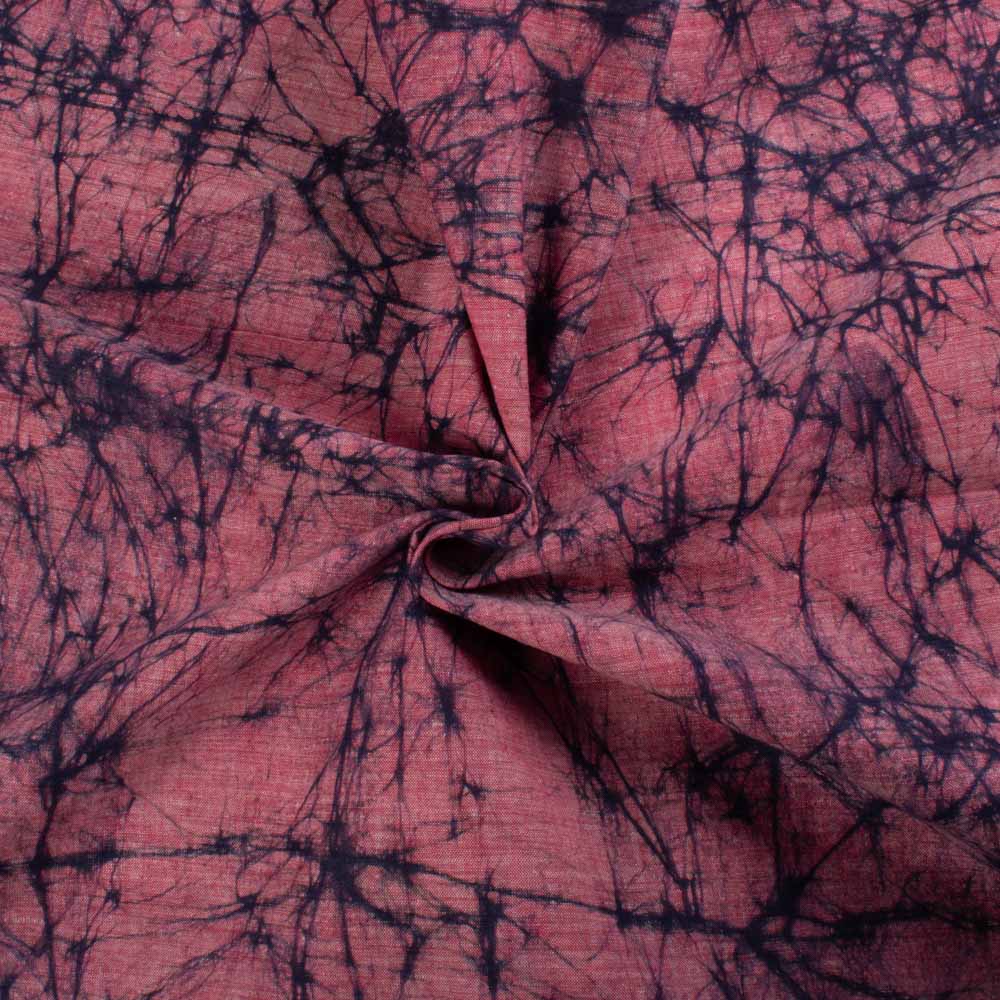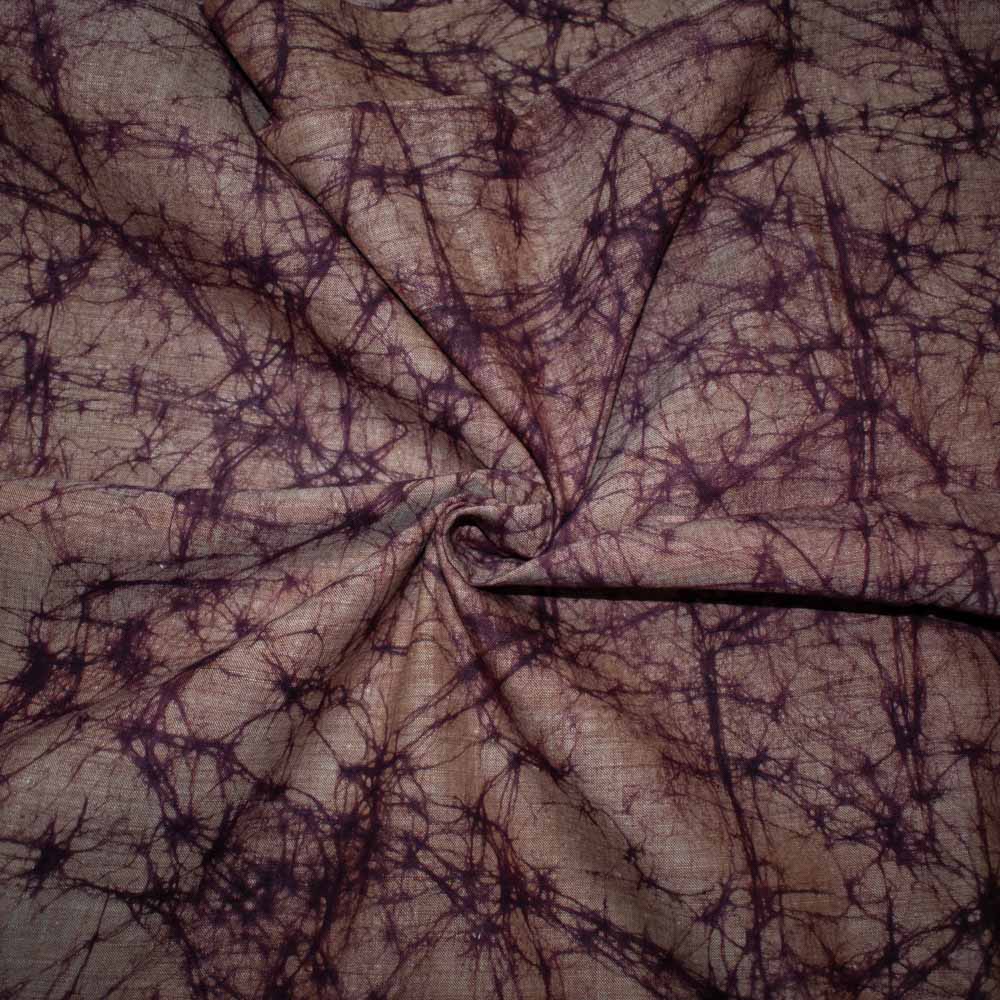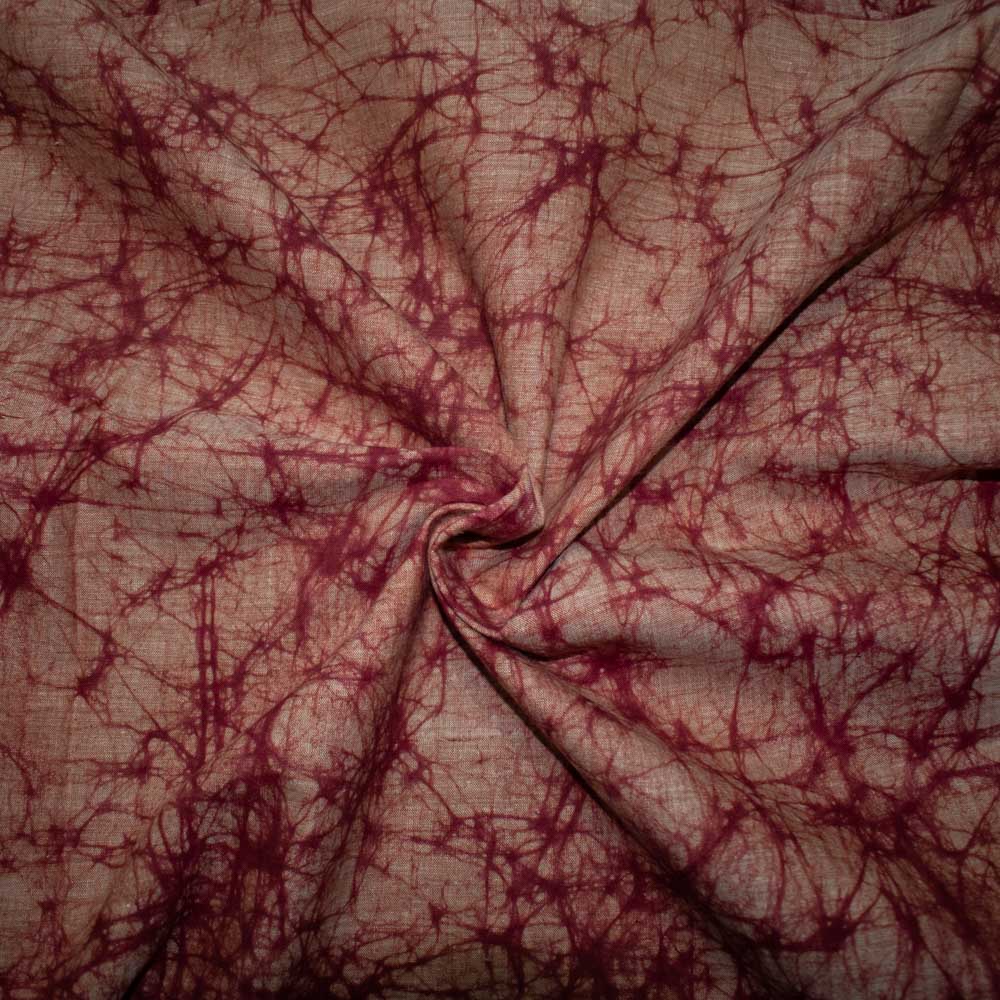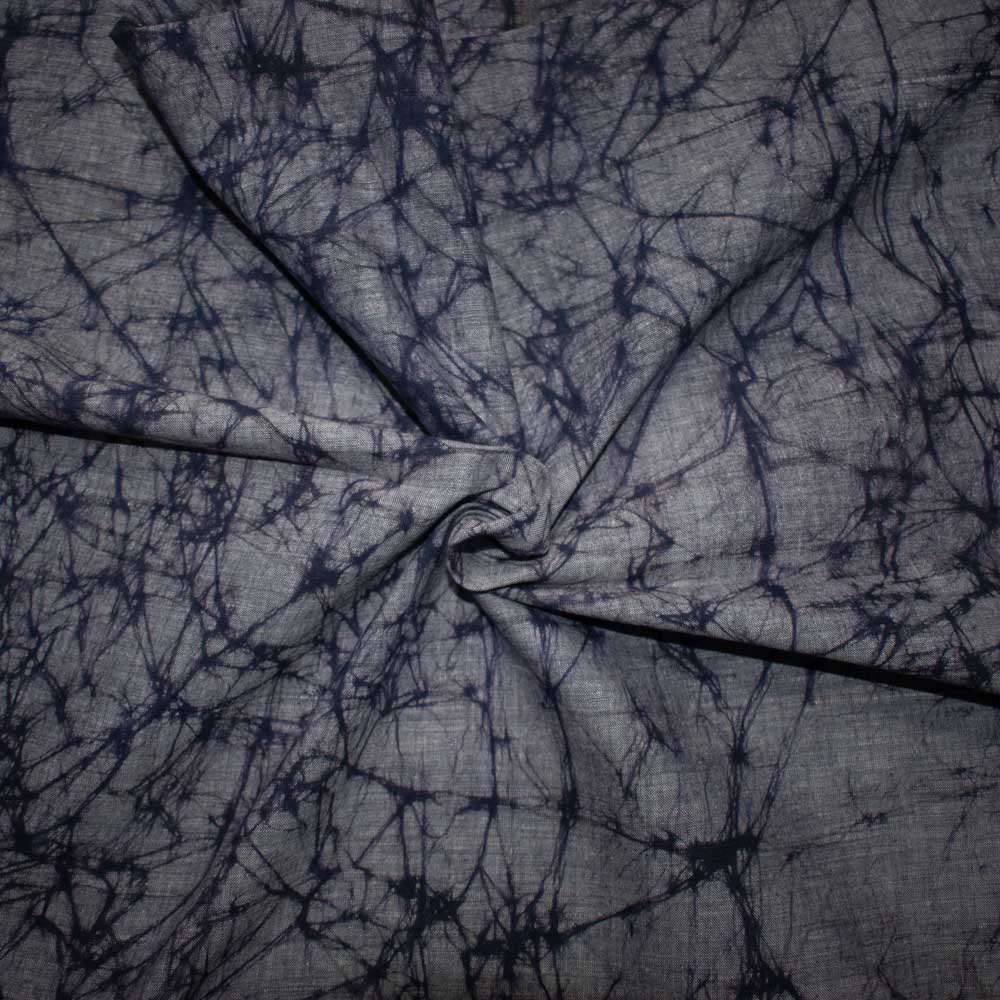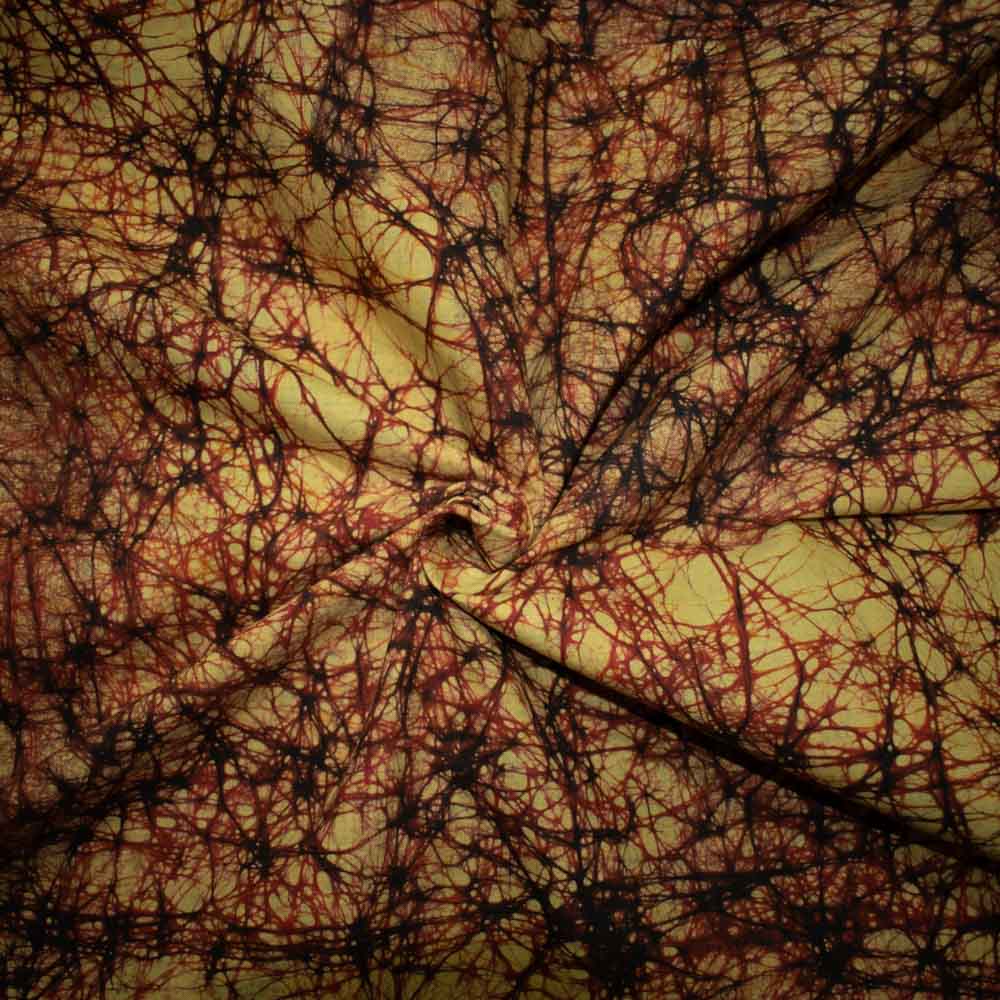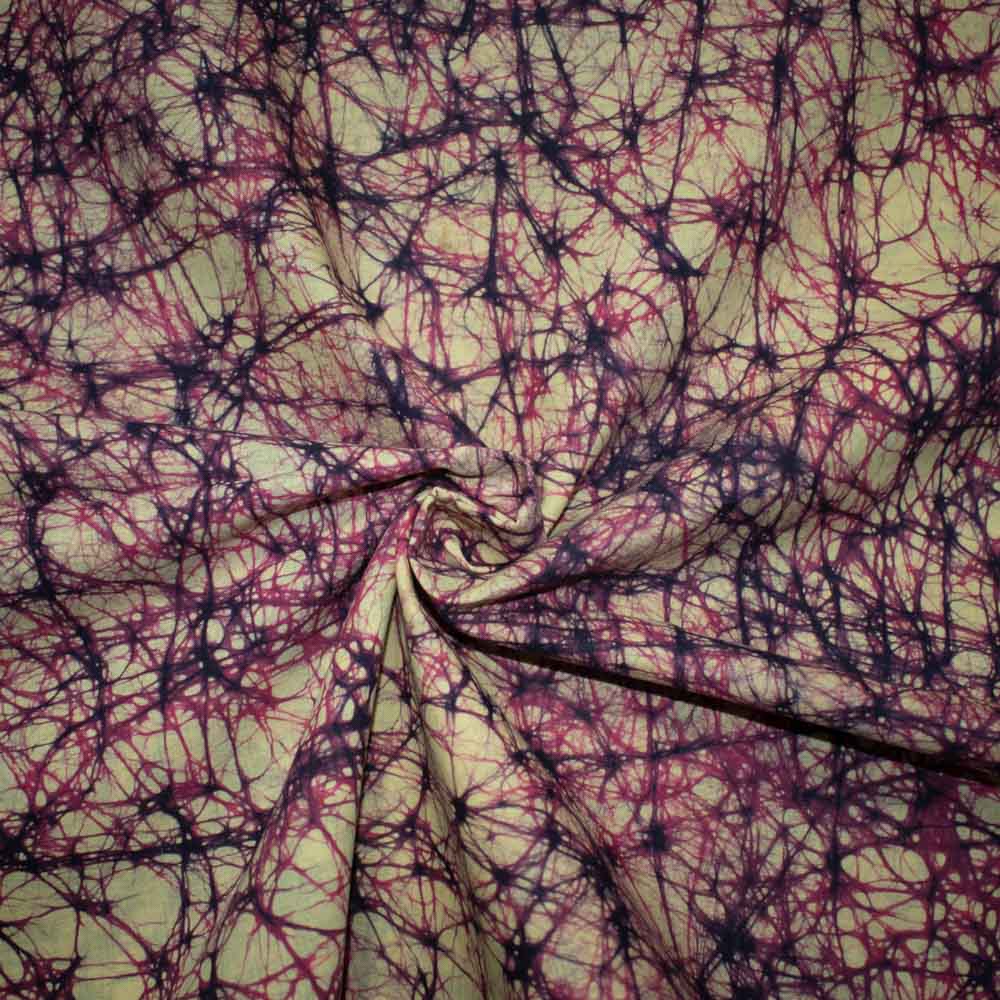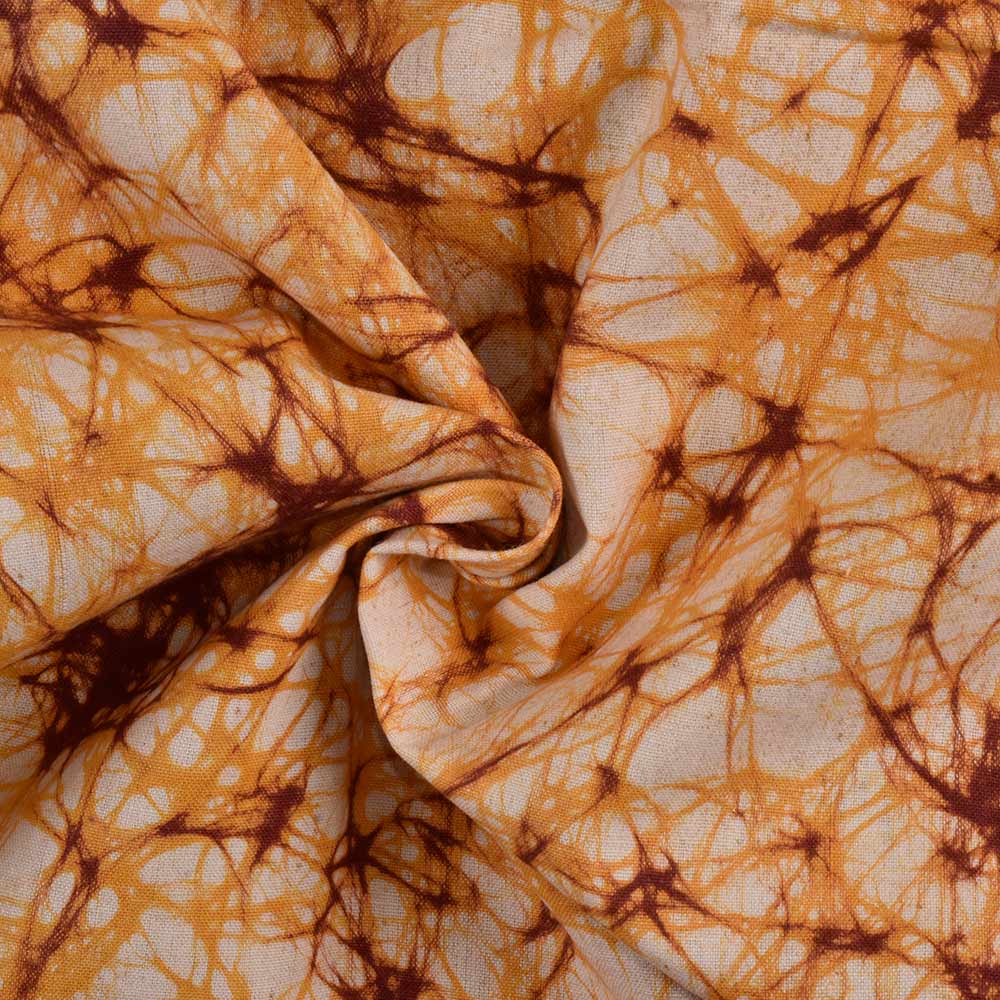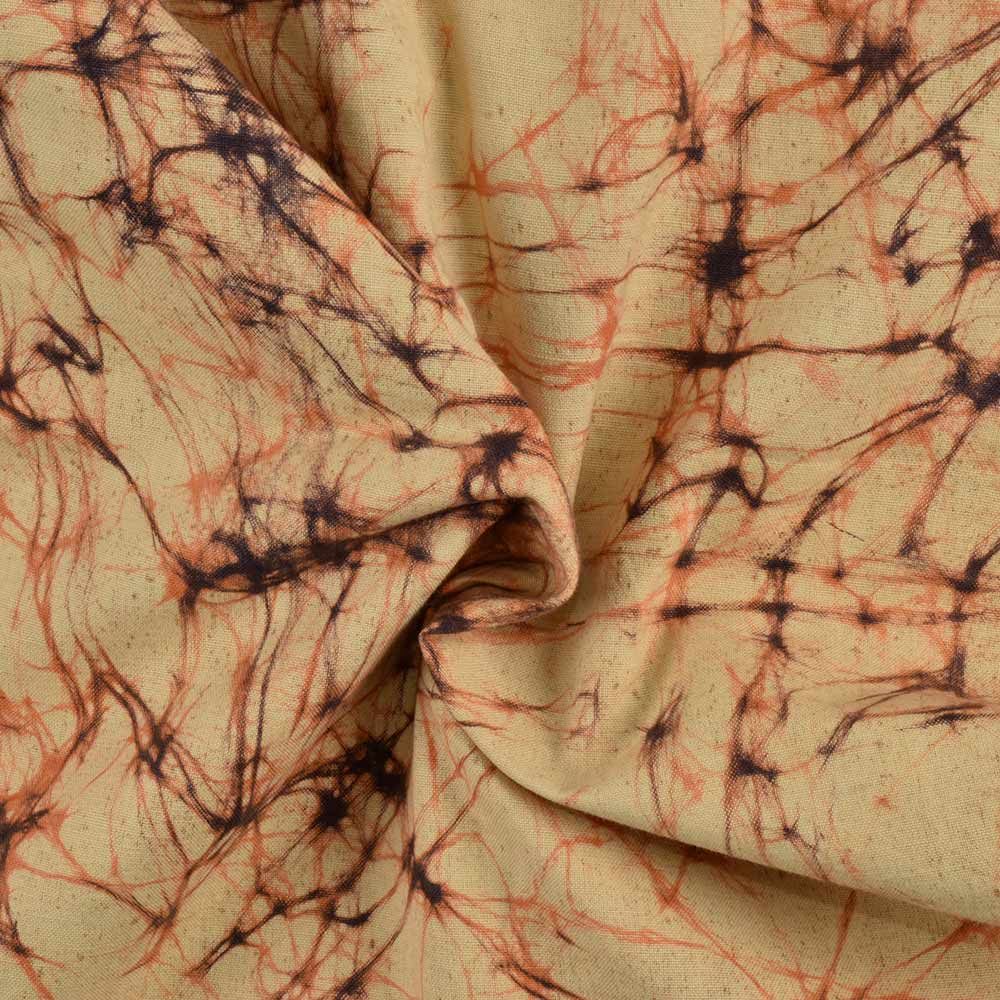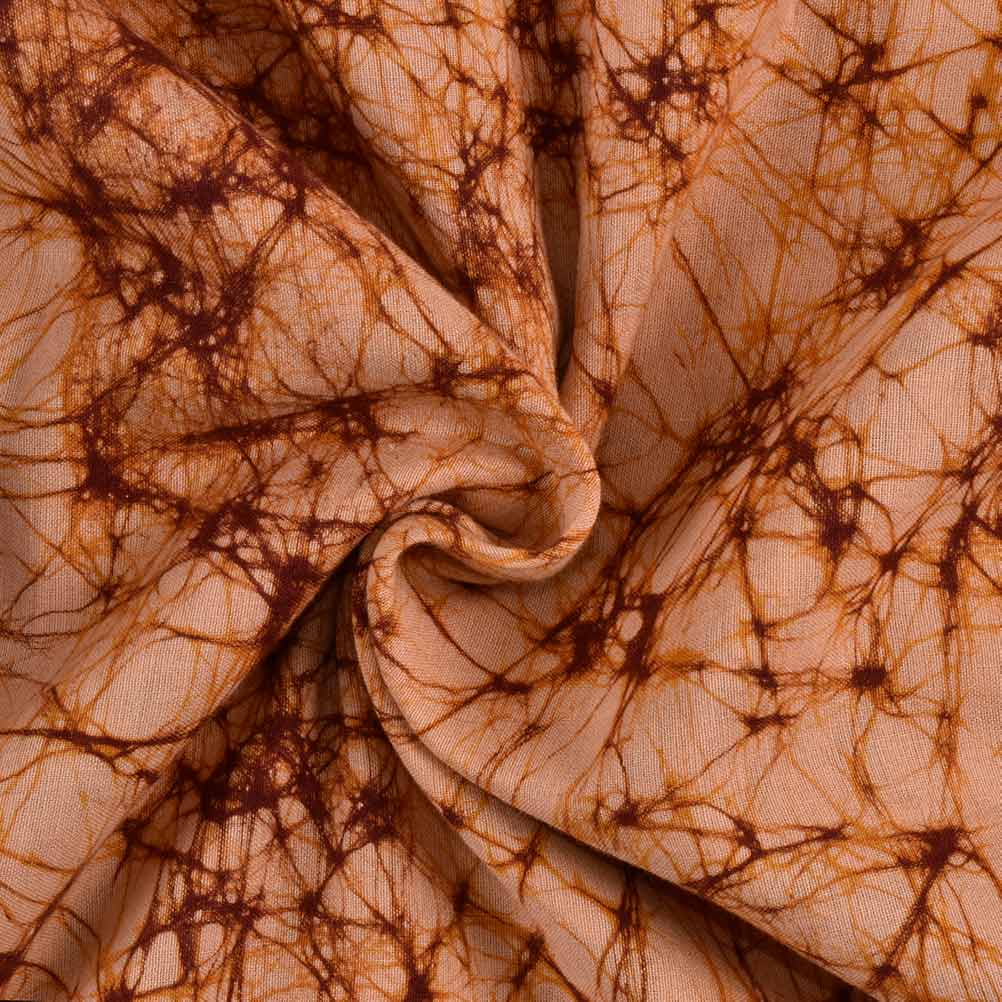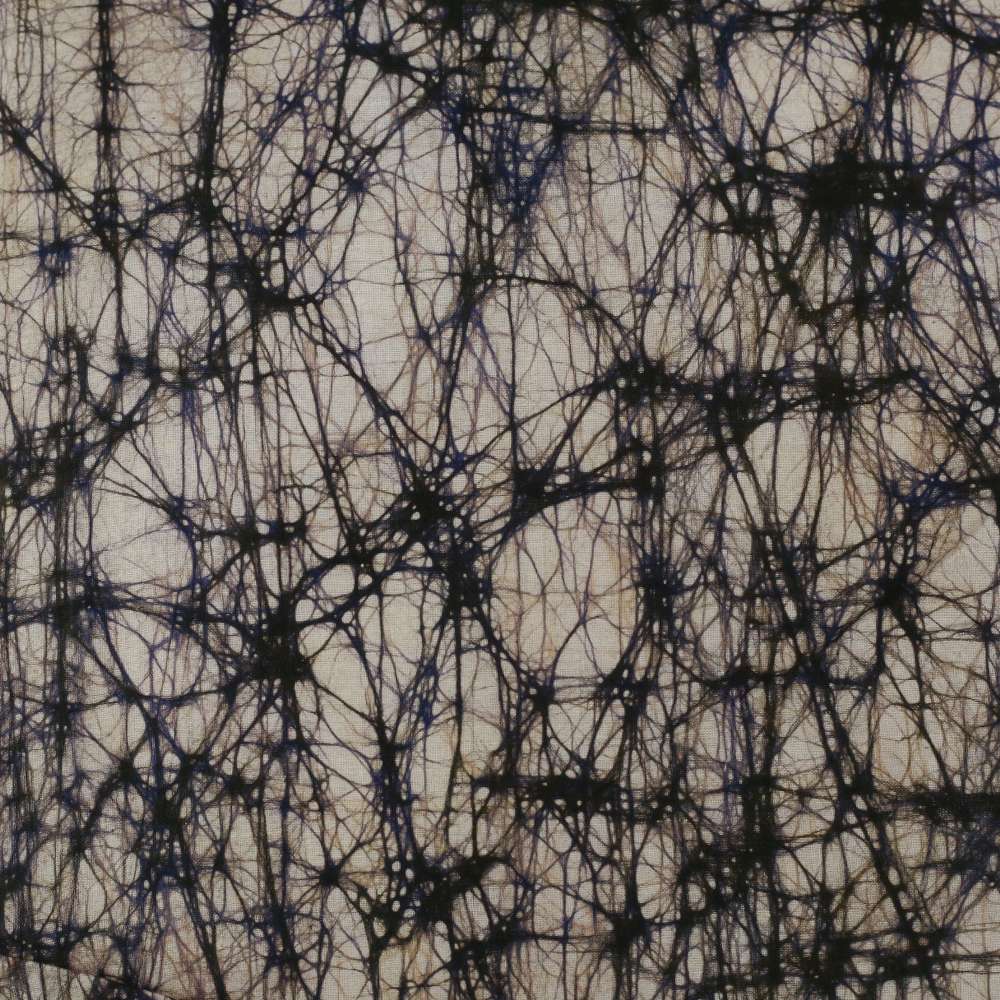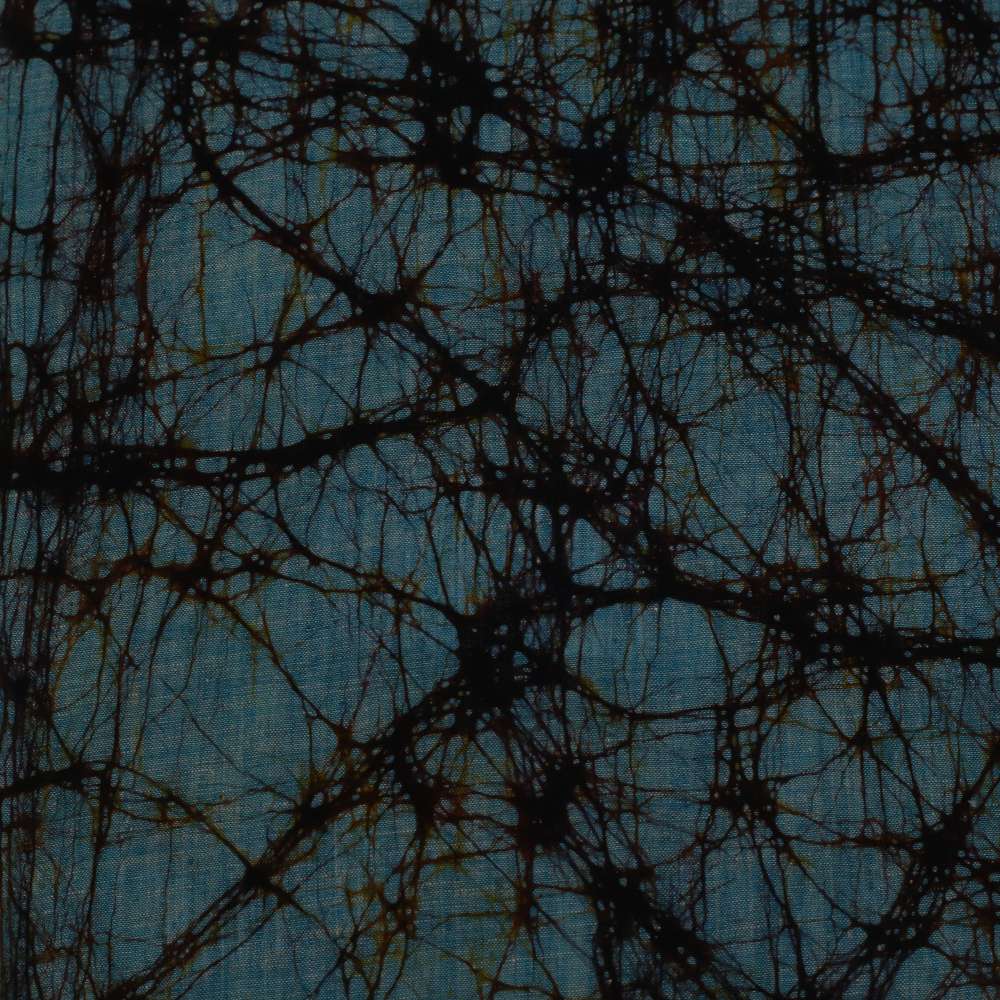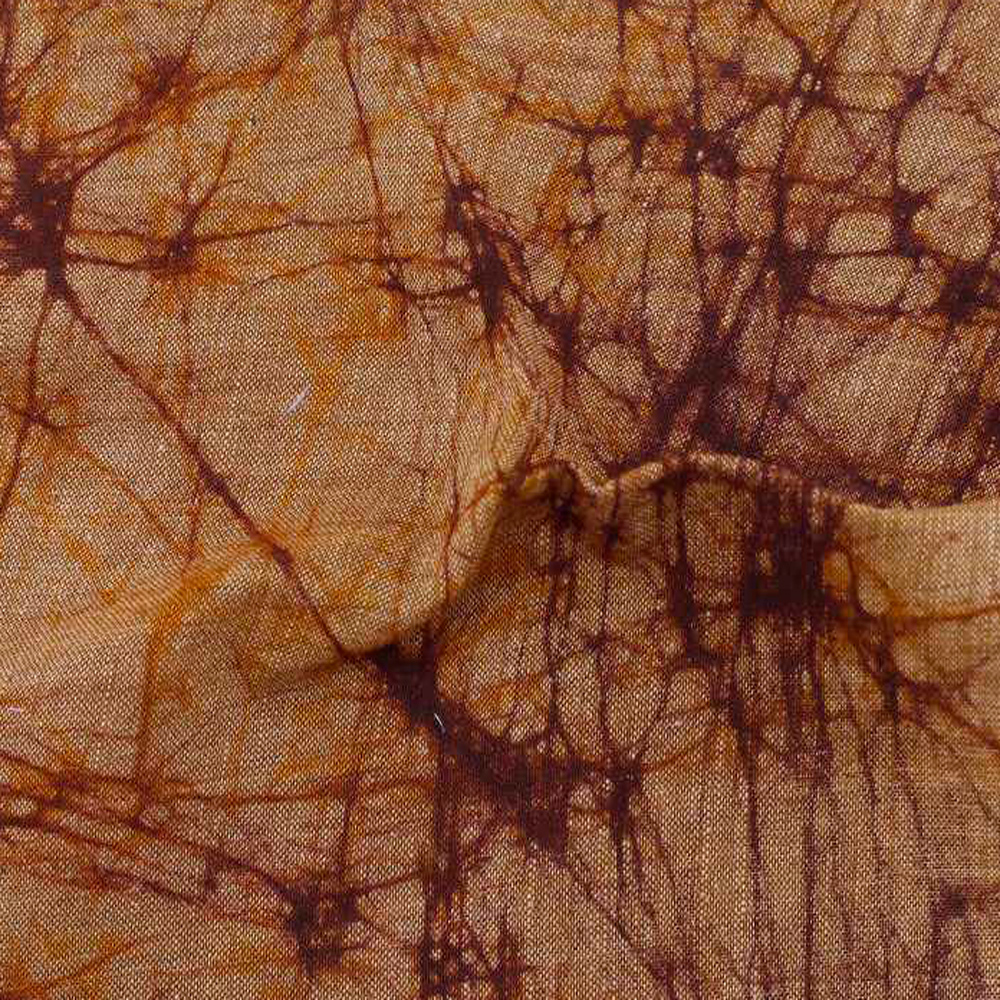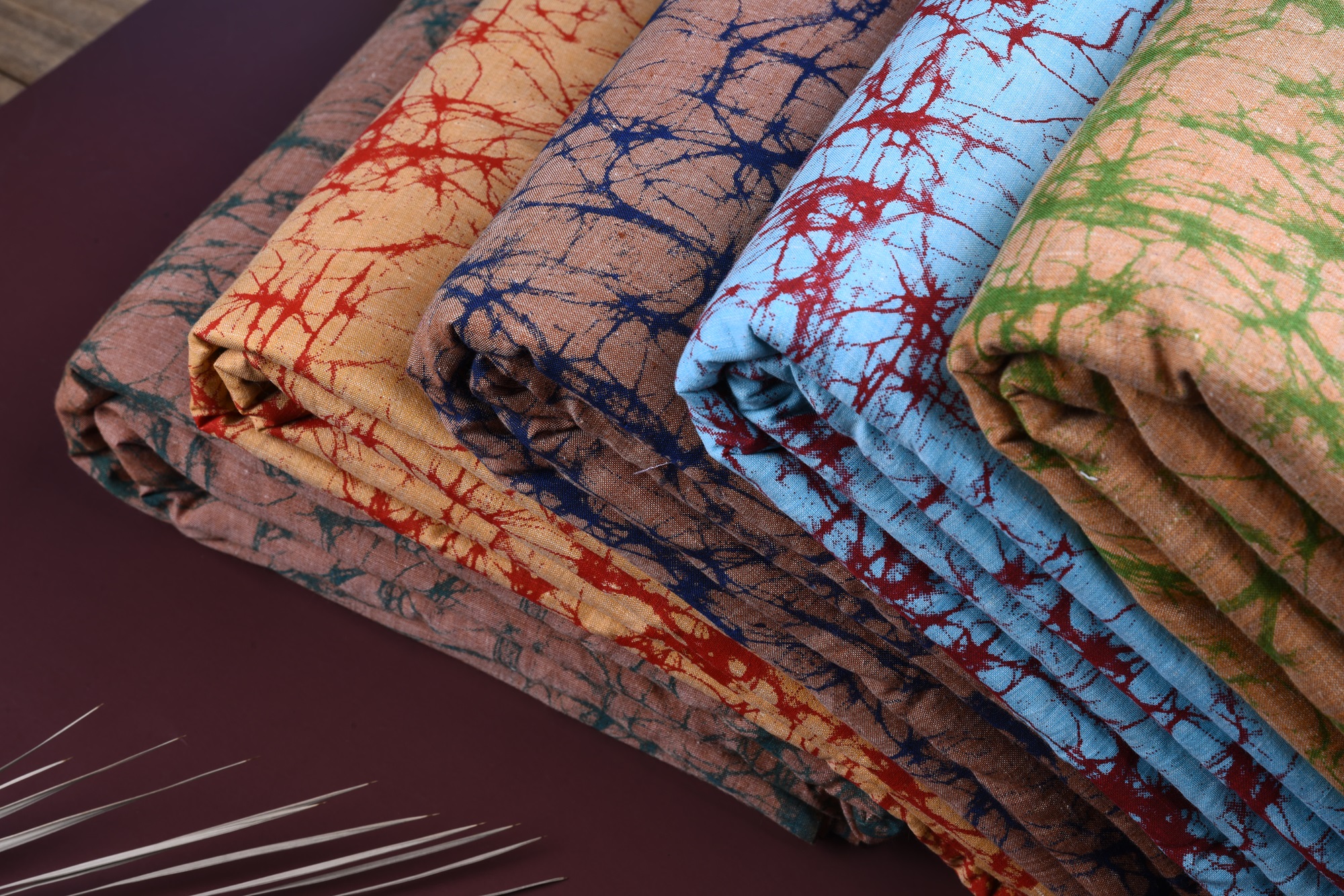
HANDPRINTED BATIK

Batik Painting Is An Indonesian Technique Of Resist Wax Print Fabrics Where Wax Is Applied To A Whole Cloth Or Along A Specific Design. The Tradition Of Batik Print Fabric Is Found In Various Countries. It Is Believed That The Term Is A Derivation From The Word `Ambatik’ Which When Translated Literally Stands For A Piece Of Cloth With Small Dots Or Writing With Wax Or Drawing In Broken Lines.
HANDPRINTED BATIK PROCESS
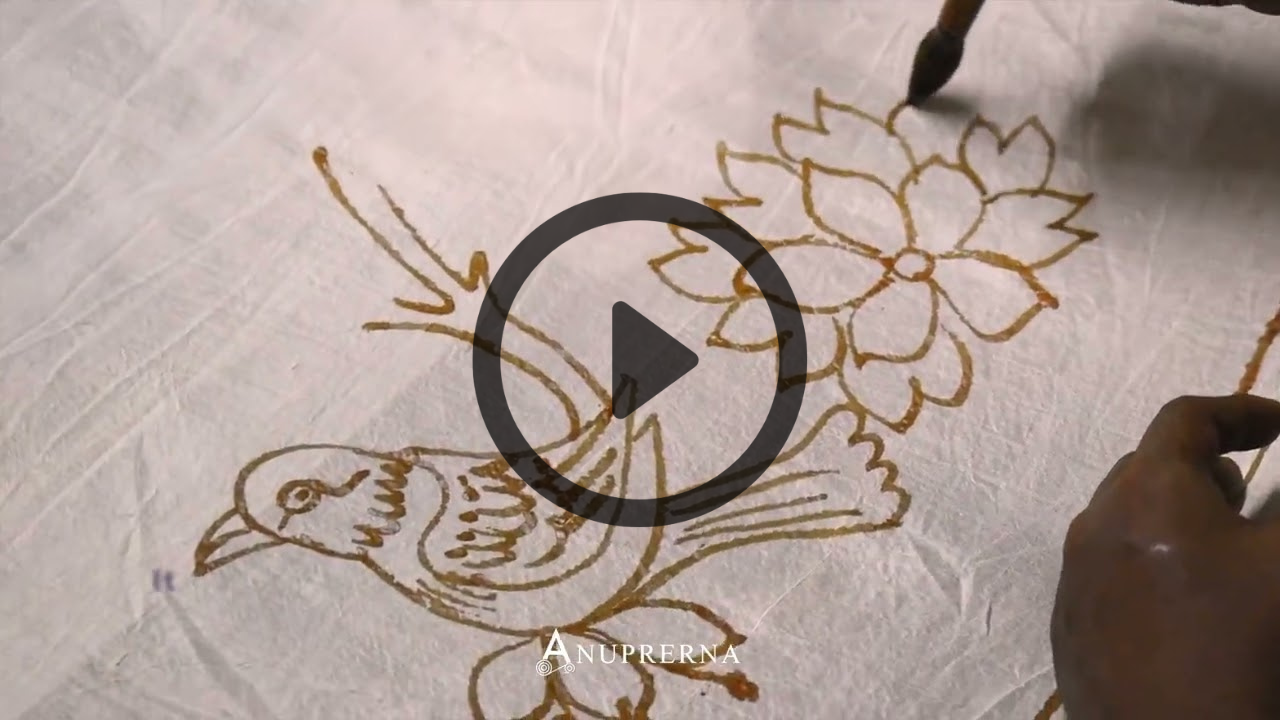
What is Batik Printing?

To make a traditional batik design, the pattern is hand-drawn with hot wax on prepared fabric, using special tools called canting. This batik technique is called batik tulis. Batik Material is very important to Indonesians and many people wear it to formal or casual events. But besides that Batik cap & Batik lukis are also recognised as Batik techniques as they too use wax for resist dyeing. The wax is used to cover the areas which are to be protected from the dye.
Traditionally, batik dyes were made from plants. The most widely used were indigo blue and soga, a warm brown colour made from the bark of the Soga tree. Meanwhile, a combination of two types of wax is used in this craft- Beeswax, and Paraffin wax which acts as the resist. The ratio of both waxes determines the Batik texture produced.
ORIGIN & HISTORY
Batik dyeing is an ancient wax resist dyed fabric tradition of Java, Indonesia. The exact history of Batik is uncertain, G. P. Rouffaer argues that the technique might have been introduced during the 6th or 7th century from India or Sri Lanka. On the other hand, the Dutch archaeologist J.L.A. Brandes and the Indonesian archaeologist F.A. Sutjipto believe Indonesian batik is a native tradition. The existence of the oldest Batik activities came from Ponorogo which was still called Wengker before the 7th century.
In Indonesia, batik has various meanings such as love, wedding dress, marriage ceremony, blessing etc. Some of the most popular Batik motifs are Parang (Bamboo), Kawung (Palm Leaf), Sekar Jagad (Starched Waterfall), Truntum (Flowering Tree) and Tambal (Plantain).
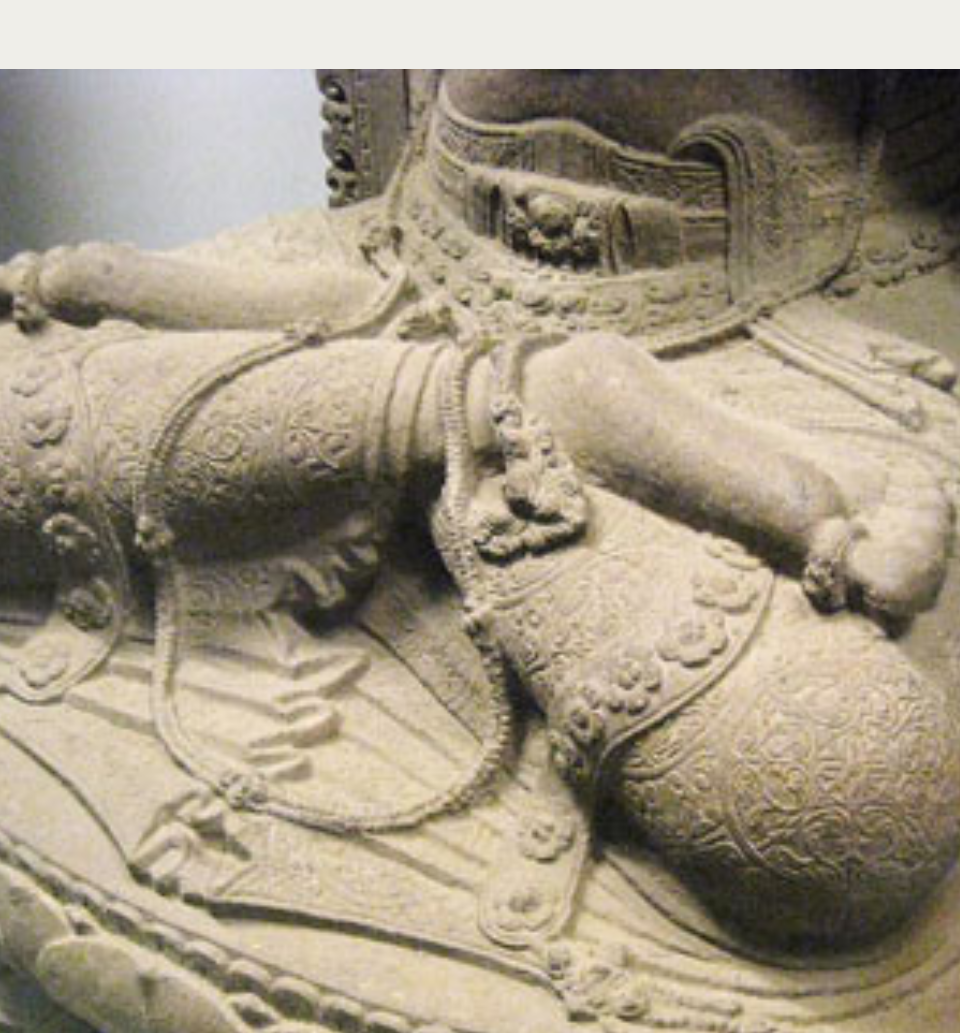
BATIK MOTIFS
The motifs and patterns used in batik are usually inspired by nature, such as flowers, plants and animals. However, there are also other motifs that have been created by artists over time.
In recent years, many new designs have emerged through experimentation with color, style and composition. This has led to a diversification of design within the tradition of batik, which can now be seen in new forms such as paintings on canvas or wood panels. We work with artisans in Bengal who have express their own perspective through this craft now.
How to process Batik?
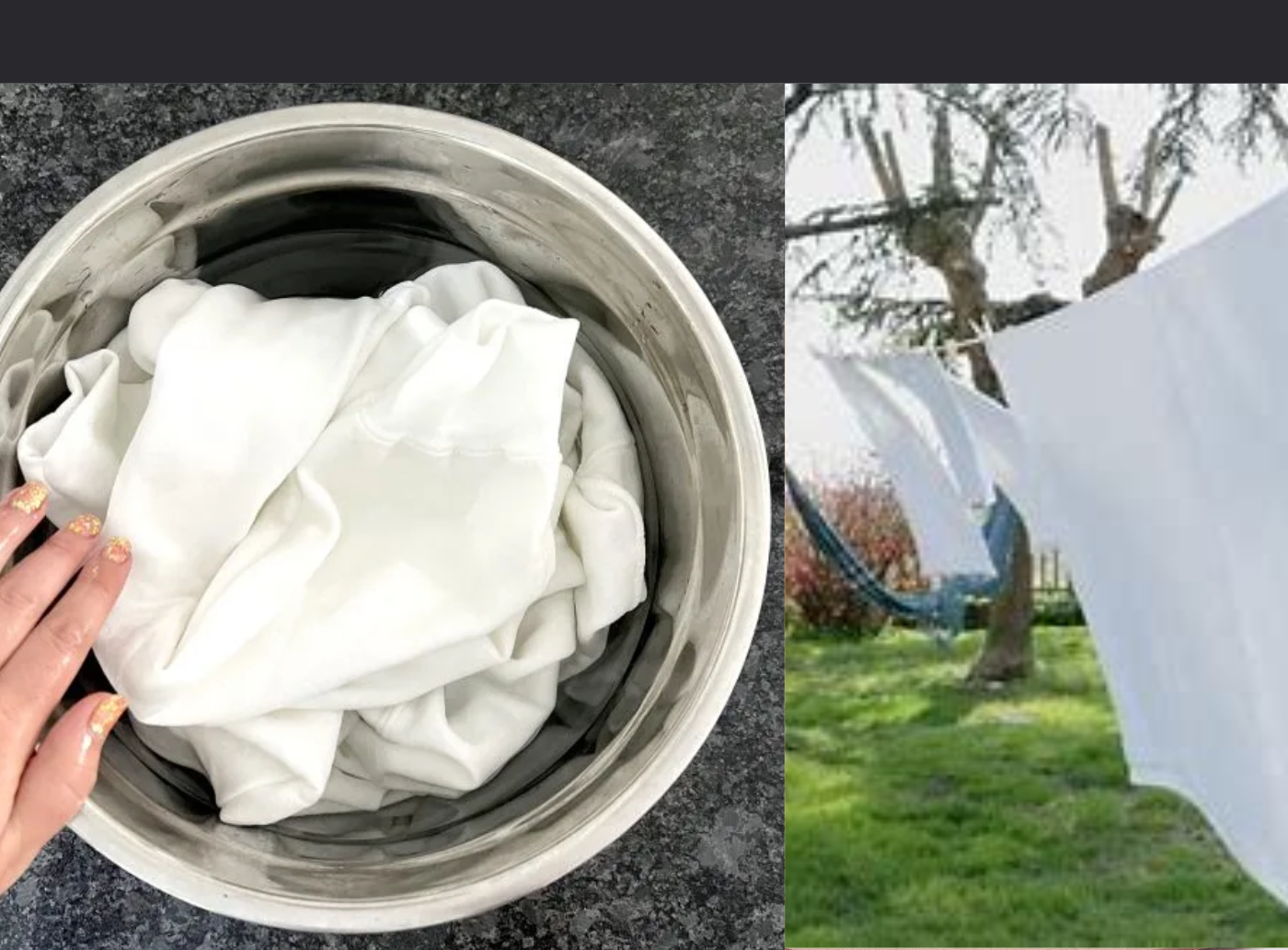
STEP 1: CLOTH PREPARATION
The fabric undergoes a washing process to eliminate any starch, chalk, or other sizing agents, after which it is immersed in coconut oil or djarak oil for several days.
The fabric is subjected to boiling in a mixture of water and ash derived from rice stalks to eliminate any surplus oil. Afterward, the cloth is dried, cut into appropriate sizes, and then hemmed.
Lastly, it undergoes another round of starching.The fabric is draped over a frame in order to prepare it for further processing.
STEP 2: PATTERN DRAWING & WAX APPLICATION
Artists commence the process of applying wax by utilizing either a canting tool or a brush.
This step involves the application of wax dots or solid lines to define the outlines of the design. Subsequently, detailed embellishments known as isen are added to complete the pattern.This process is called Tulis.
Once the initial phase of designing is finished, the process is repeated on the back side.
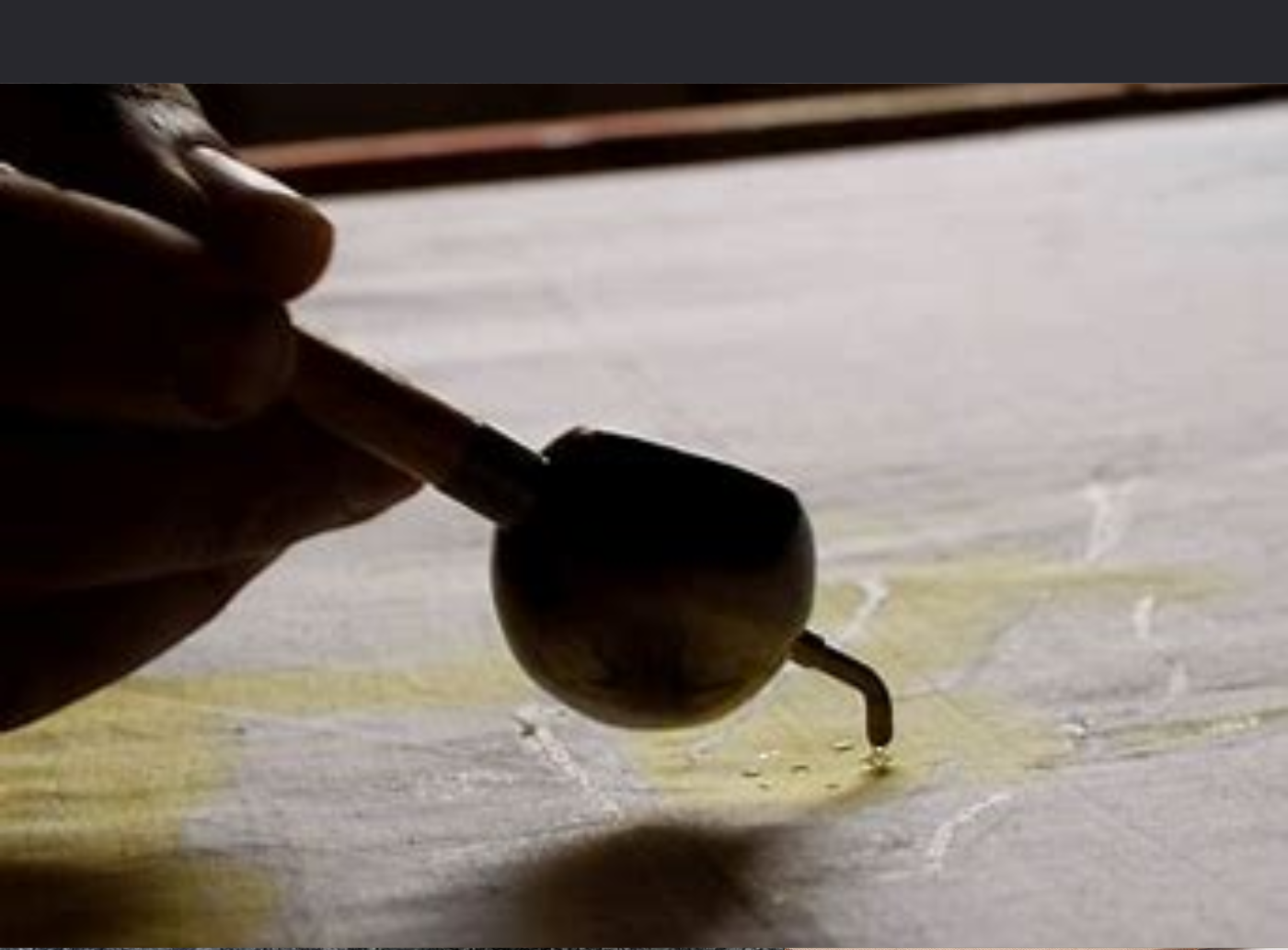
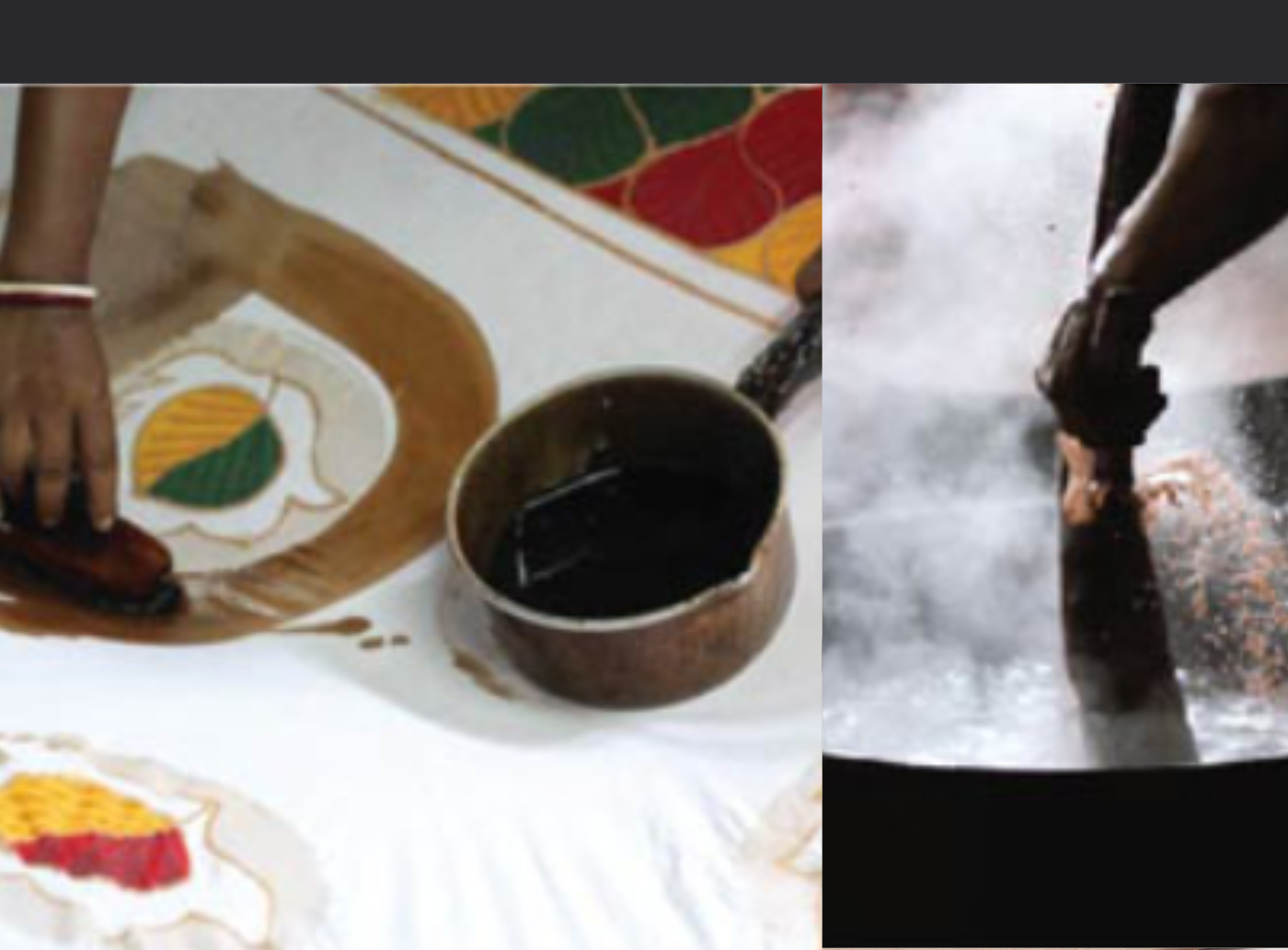
STEP 3: DYEING & FINISHING
The fabric is first soaked in a cold dye of the initial color. Once it has dried, wax is then applied to all the areas that should retain this color, and the fabric undergoes another dyeing process with the second color.
The above process is continued until all the colors have been incorporated. Additionally, in some cases, wax may be eliminated from specific areas to ensure exposure to the next dye bath.
After the dyeing process is finished, the fabric is immersed in a fixative solution.
PROCESS INVOLVED
At Anuprerna, we create the unique and abstract pattern by covering the complete fabric surface in wax and once cold, scrunch it slightly to create cracks. This is then dyed in the dark shade and treated in hot water to remove the wax. Once this is done, the fabric is dyed in a lighter base color.
Another way we create Batik Design is by using a brush to paint the wax onto the fabric in the desired design. Then it is dyed, followed by washing in hot water. The result is the design remaining uncolored over the dyed base. Depending on the design, the fabric may be dyed 1st and then painted with wax.
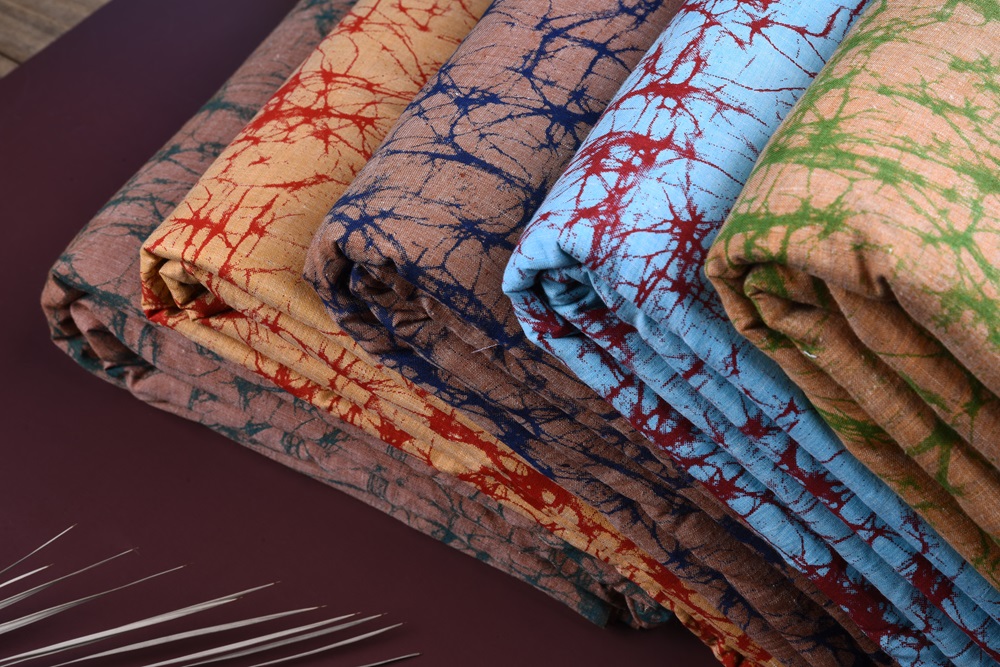
APPLICATION OF BATIK PRINT DESIGN IN PRESENT DAY
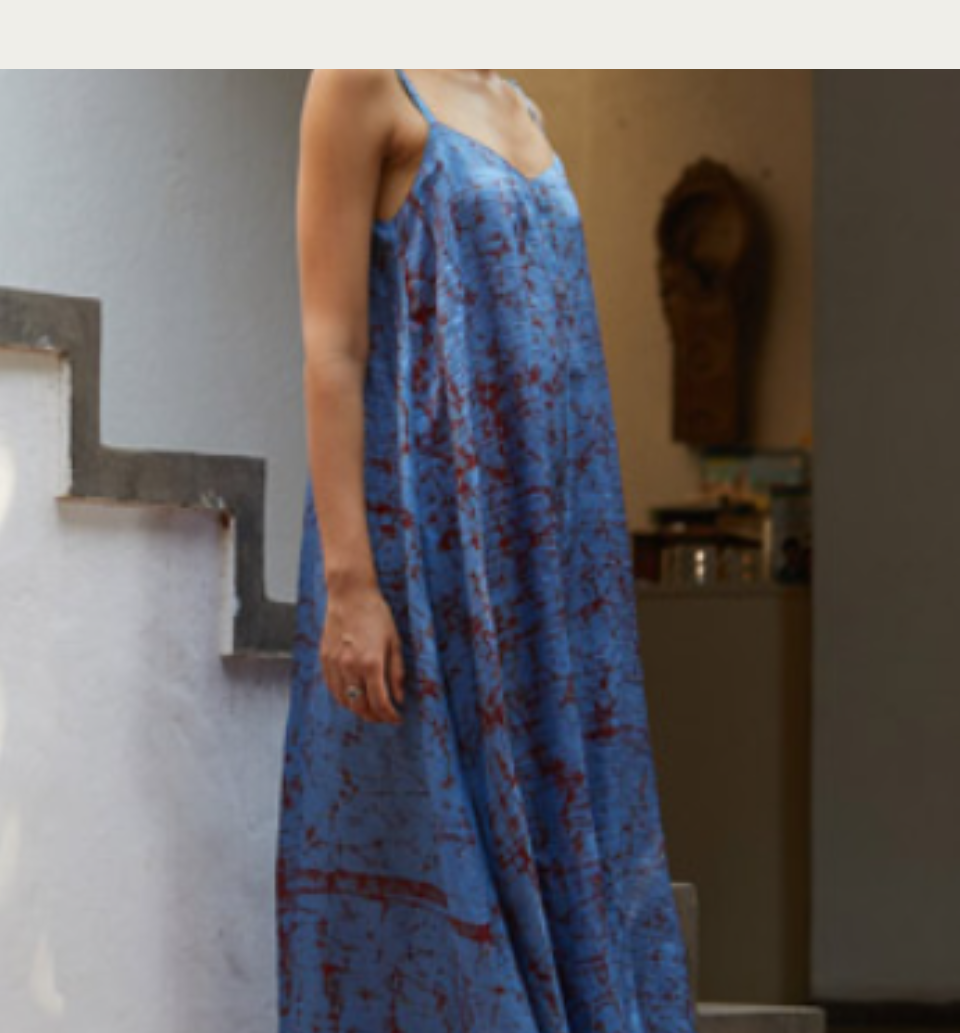
What is Batik Cloth?
Contemporary batik, while owing much to the past, is markedly different from the more traditional and formal styles. For example, the artist may use etching, discharge dyeing, stencils, different tools for waxing and dyeing, wax recipes with different resist values and work with silk, cotton, wool, leather, paper or even wood and ceramics.
Its present-day applications of Batik Fabrics can be found in sarees, kimono shrugs, blouses, shirts, dresses and other accessories. Batik painting is historically the most expressive and subtle of the resist methods. The ever-widening range of techniques available offers the artist the opportunity to explore a unique process in a flexible and exciting way.
frequently asked questions
What is the ideal application of Handprinted Batik?
arrow_drop_downBatik is versatile and can be used with various materials & in various applications. They are found in sarees, dresses, blouses, scarves, stoles, and home decor items. The ever-widening range of techniques available offers the artist the opportunity to explore a unique process in a flexible and exciting way.
What makes Handprinted Batik at Anuprerna different?
arrow_drop_downAt Anuprerna, we create the unique and abstract pattern by covering the complete fabric surface in wax and once cold, scrunch it slightly to create cracks. This is then dyed in the dark shade and treated in hot water to remove the wax. Once this is done, the fabric is dyed in the lighter base color.
What are the key characteristics of handprinted batik fabrics?
arrow_drop_downHandprinted batik fabrics are known for their intricate patterns, and the presence of wax-resisted areas, which give them a unique, crackled appearance.
Are there any specific care tips for preserving handprinted batik fabrics?
arrow_drop_downTo preserve handprinted batik fabrics, it's advisable to wash them in cold water with mild detergent, avoid direct sunlight to prevent fading, and store them away from moisture to prevent mold growth.
More Stories
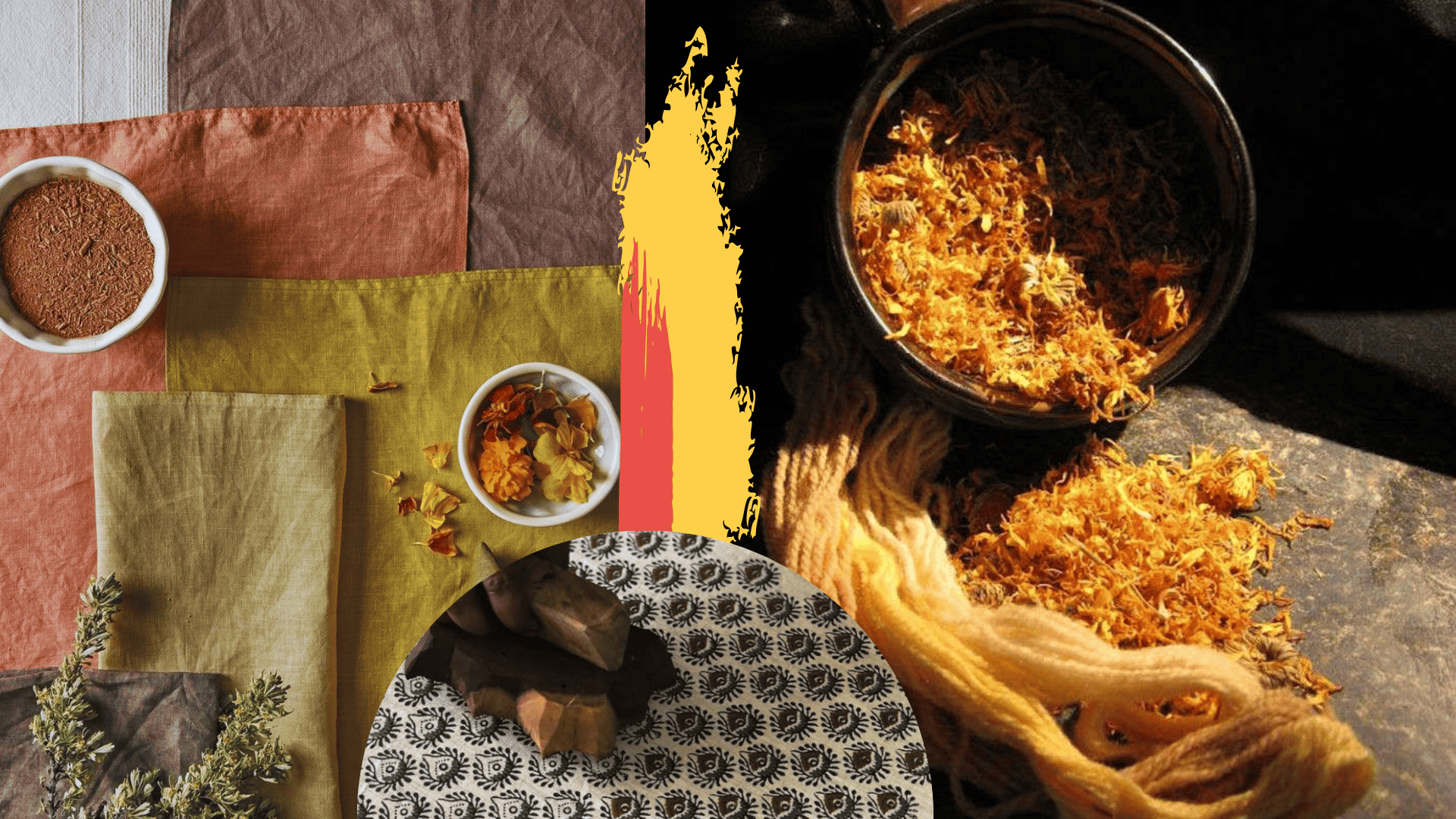
naturally dyed block printing

digital printing
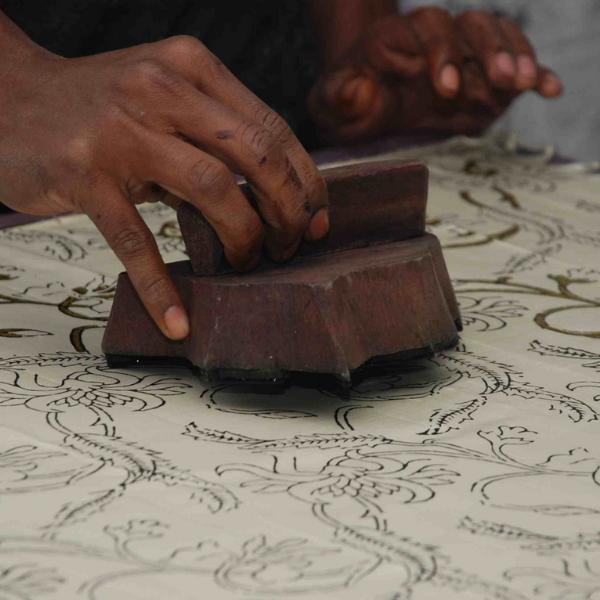
hand block printing
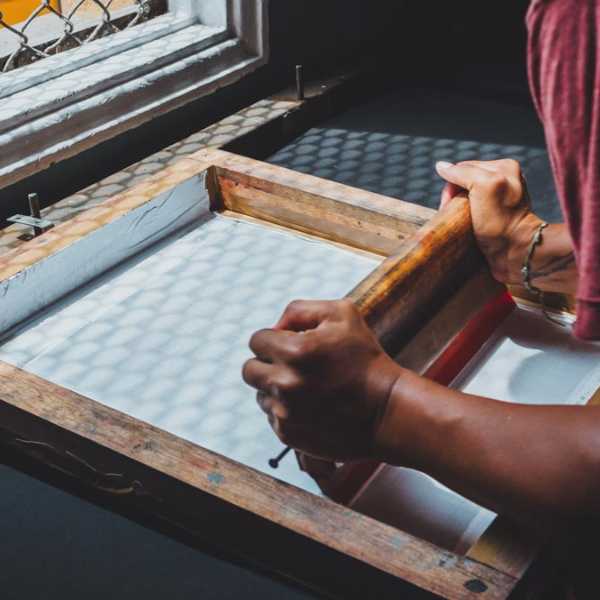
screen printing
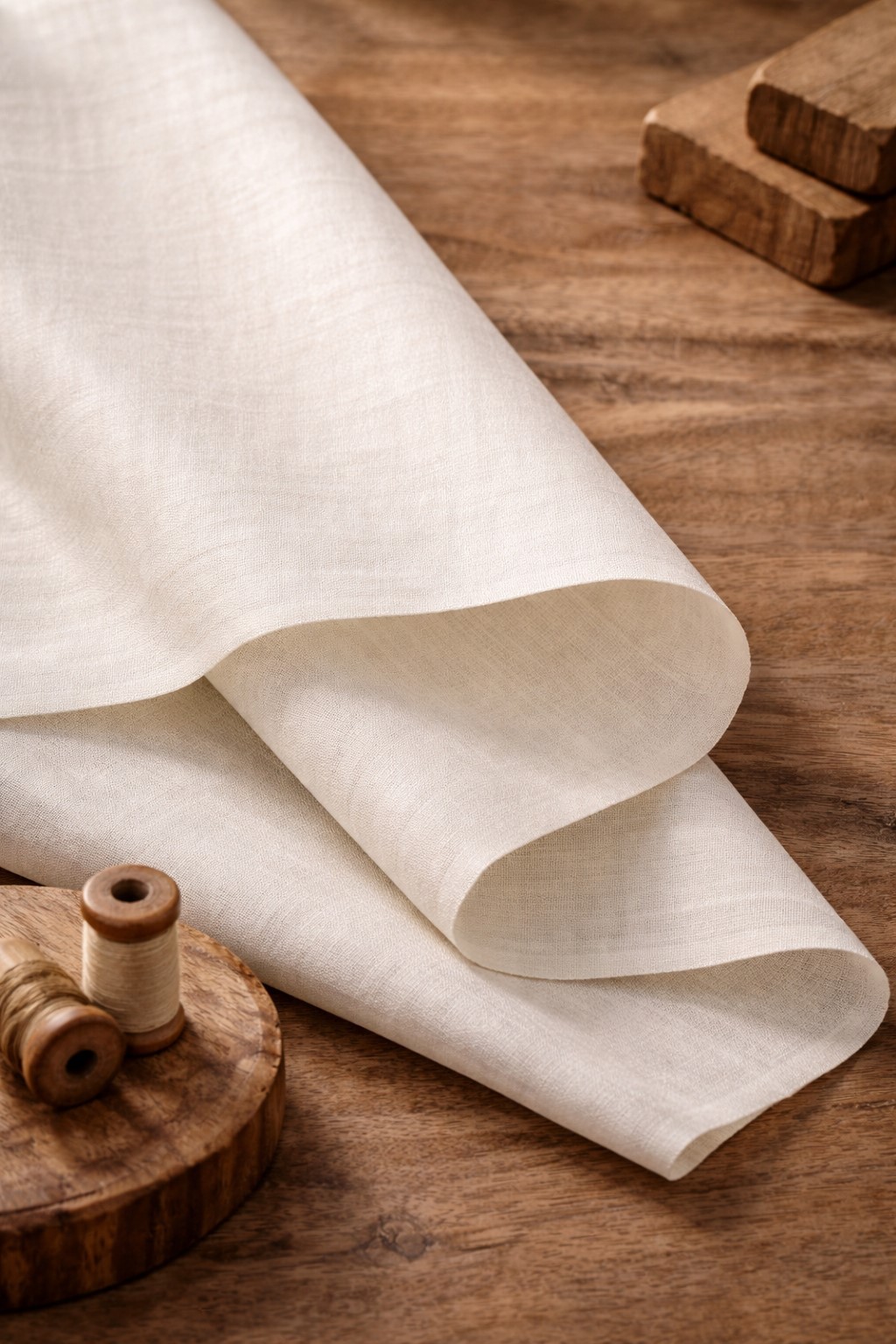
eri peace silk

ikat - a distinctive style

